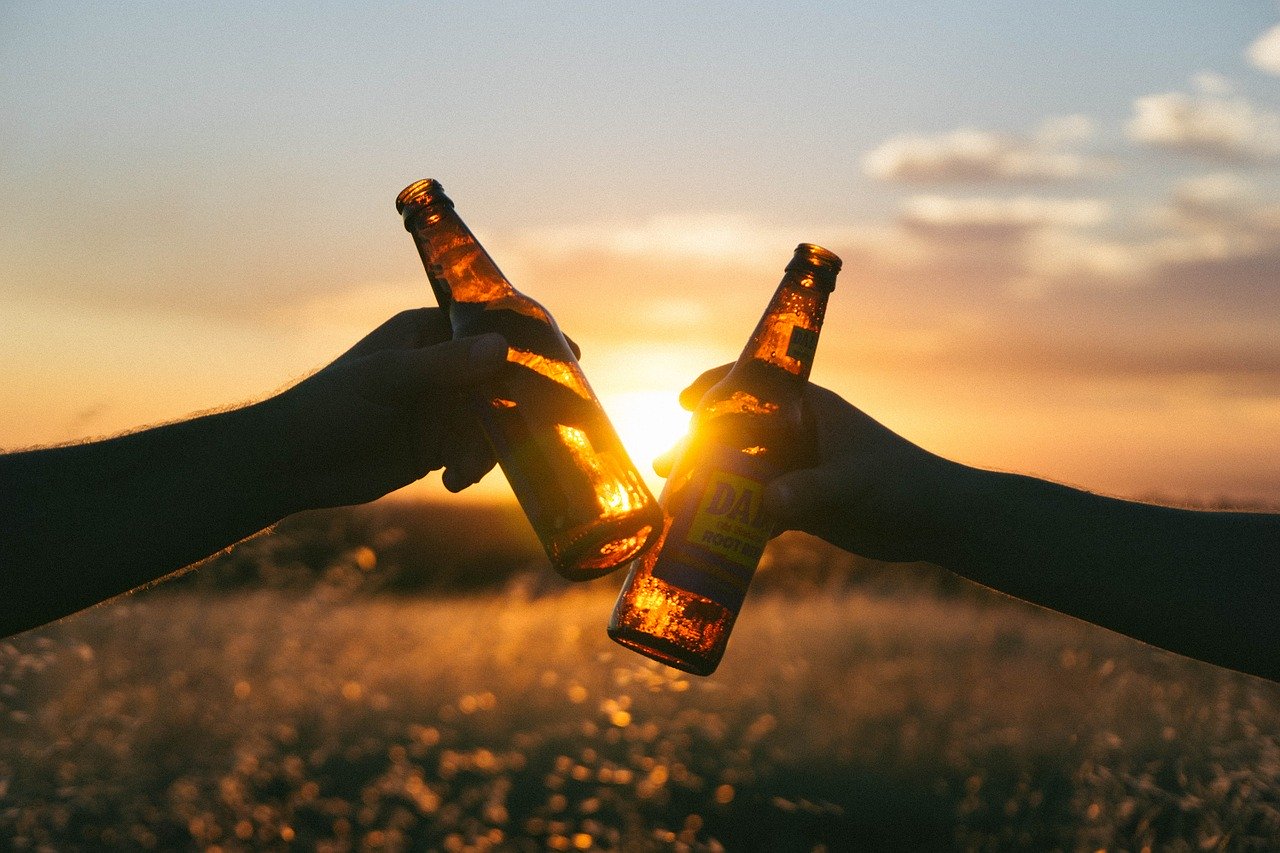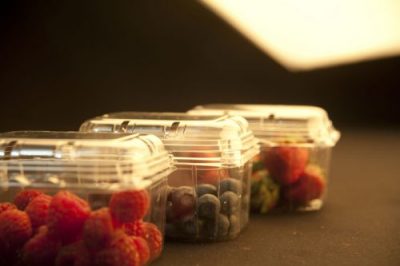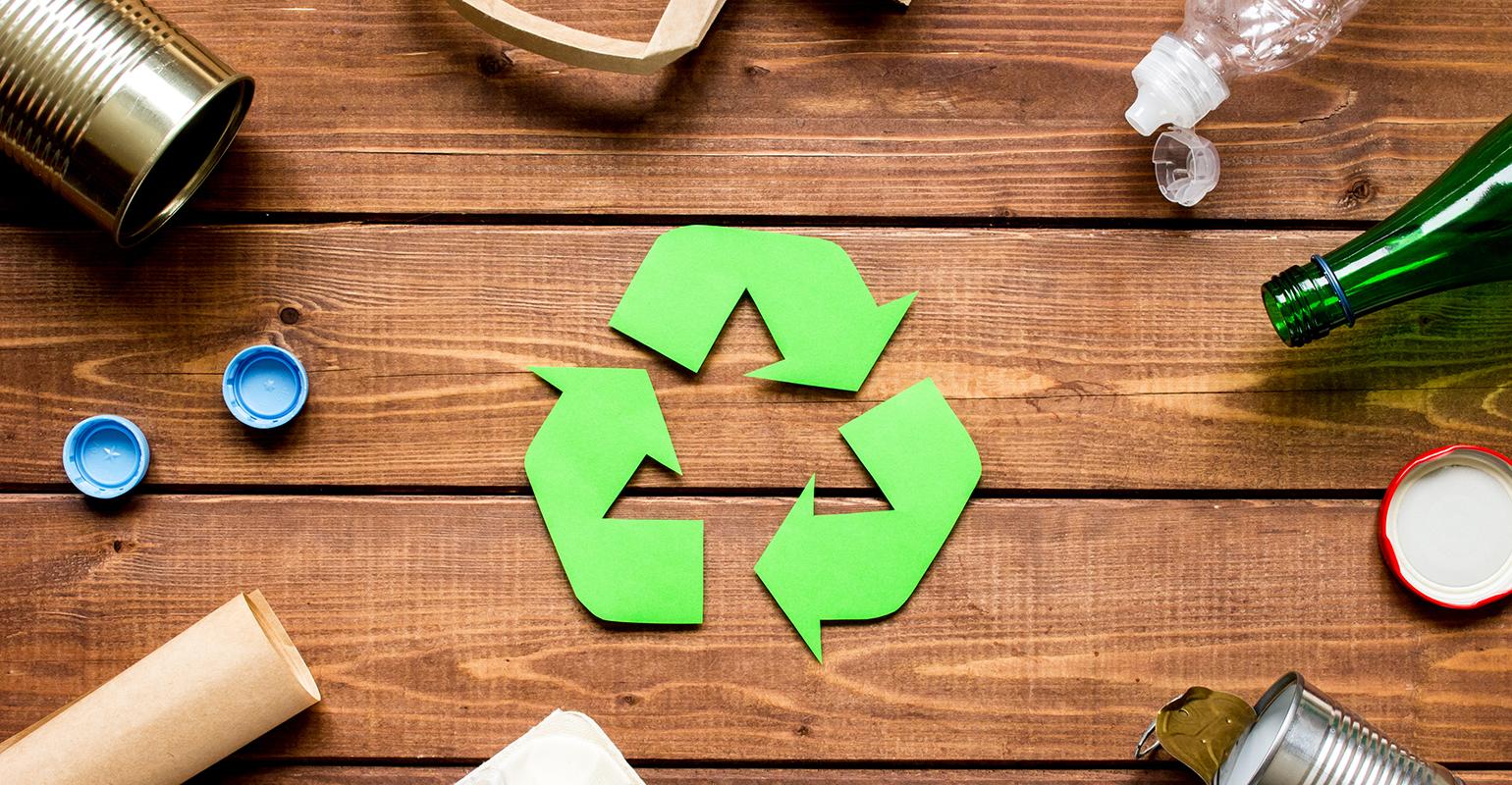The Helpful Guide to Choosing Your Beverage Packaging
Introduction
Quality beverage packaging solutions are in great demand nowadays, given the growing need for beverages.
This ultimate guide is going to help you if you are:
- a packaged beverage supplier
- involved with the beverage supply chain
- a supplier of the beverage packaging industry
- any other needs for beverage packaging solutions
The beverage packaging market
Studies revealed that the global beverage packaging market size expects to reach $133.3 billion in 2026.
A lucrative number, given the growing demand for a variety of beverages.
And as the final part of the beverage supply chain, the beverage packaging industry benefits from the ever-growing beverage industry.
When it comes to beverage packaging, it is a complex process due to the various beverage types and requirements. The reason is, different types of beverages require different materials and containers, for convenience or need to keep fresh. And beautiful designs to catch consumers’ eyes as well.
Factors boosting the beverage packaging market growth
Improved lifestyles and increased per capita income (mainly in developing economies) have promoted the consumption of packaged beverages. Thus, the demand for better and convenient packaging technology is promoted.
Convenience factors in the beverage packaging industry allow for reduced waste and increased packaging resealing capabilities in the distribution process. It also allows for increased portability and reduced weight. So, it helps to save costs and thus boost the beverage packaging market.
Moreover, in urban areas, the increase in per capita income and the decline in water quality have led to an increase in the global consumption of bottled or packaged water. At present, the bottled water market is one of the fastest-growing markets.
Therefore, the rapid growth of the bottled water market has also promoted the growth of packaging required for bottled water production.
Also, many manufacturers have updated their production technology and applied automation technology in the production process. Therefore, production efficiency has greatly improved.
At the same time, the quality of products has also improved. These factors together lead to the overall growth of the beverage packaging market.
On the other hand, growing concerns about obesity and high sugar intake are leading to packaging strategies.
For example, sodas, alcohol, and sugary drinks. In the future, ordinary packaging may hinder the market.
However, the application of bioplastics in beverage packaging will create favorable opportunities for the growth of the beverage packaging market.
Also, there are alternatives to bioplastics known as biopolymers. It is a polymer made from plant-based materials rather than petroleum-based materials. So, this enables bio-PET containers to degrade and reduce plastic contamination.
The non-alcoholic beverage market accounts for more than half of the global market share.
However, the demand for packaging solutions will also grow rapidly by 2026.
Competition Analysis
The main market participants described in the report include Amcor plc, Ball Corporation, Orora Limited, Reynolds Group Holdings Limited, Smurfit Kappa Group plc, SIG Combibloc Group AG, Crown Holdings, Inc., Mondi plc, Stora Enso Oyj, and Tetra Laval International S.A.
Many competitors in the beverage packaging market have taken product release as their main development strategy. They hope to expand their product portfolio of recyclable beverage packaging. For example, in July 2019, SIG launched the signature pack 100 in France. This signature pack 100 is a sterile carton. And it’s aluminum-free, made from plant-based and 100% biodegradable polymers.
Similarly, in August 2019, Amcor developed a new line of polyethylene terephthalate (PET) bottles for the Salzburg beer brand in Brazil. The new bottles can last for four months, and people can recycle 100% of them using existing recycling technologies. Besides, the bottle has a glass-like appearance and has a metal crown, which is very beautiful. This makes it more attractive to customers.
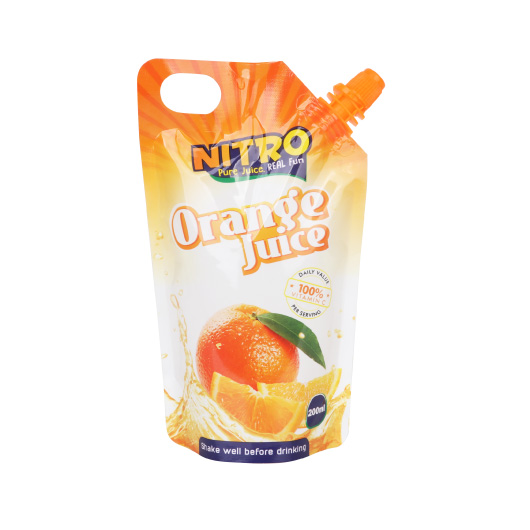
Why beverage packaging solutions worth our attention?
Beverage packages with proper designs can extend the shelf life of the beverage. That is to say, if you have the right options for your beverage packages, your beverages will live longer!
At the same time, a proper package solution can also save your material cost. And generate less waste to the mother earth.
Also, the packaging materials used for drinks include glass, polymer, metal, cardboard, and their combinations. The shelf life, chemical composition, and value of beverage determine what material the producer uses for packaging.
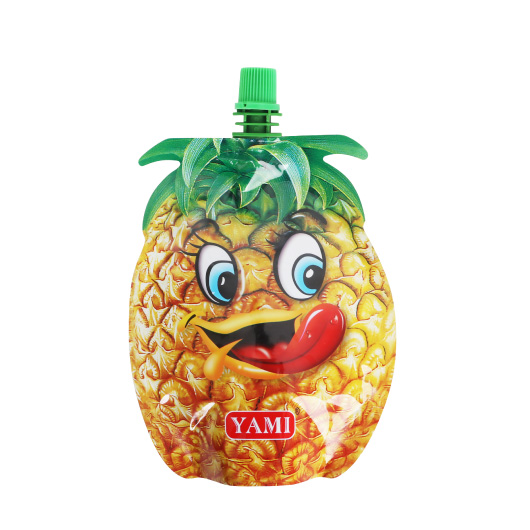
Types of beverage packaging
By beverage packaging materials
Glass beverage packaging
Glass beverage packaging has many advantages. First of all, it is non-toxic and tasteless. You don’t have to worry that drinking a glass drink will affect your health. They are very safe indeed.
Second, it is transparent. Then the glass beverage packaging will be very beautiful so that customers can see the appearance of the beverage. You know, it can stimulate their desire to buy.
Besides, the sealing of glass beverage packaging is very good. In this way, the air can be effectively isolated, to avoid the microorganism in the air and the beverage from the chemical reaction, resulting in the deterioration of the beverage.
Then, the raw material of glass beverage packaging is glass. Glass is very common, and the price is very low. Well, most drinks packed with glass materials are affordable.
Also, glass material has the characteristics of heat resistance, pressure resistance, and cleaning resistance. It can be sterilized at high temperatures and stored at low temperatures. In this way, you can store drinks well.
Finally, glass beverage packaging is reusable and recyclable. Glass bottle recycling can save energy and reduce the waste capacity of landfills. At the same time, it can provide more raw materials for other products, including glass bottles. It’s very good for protecting the environment.
Thus, glass beverage packaging is the preferred packaging material for beer, fruit tea, jujube juice, and many other beverages.
However, glass beverage packaging also has some disadvantages. For example, packing drinks with glass can make them heavy. Besides, due to the particularity of glass material, the packaging of glass material is easy to be broken and damaged during transportation. So that means it’s more expensive to transport.
Metal beverage packaging
The beverage packaging solution is happy to have metal as an option. It has good barrier property as glass beverage packaging. Metal beverage packaging can not only block air, oxygen, steam, carbon dioxide, and other gases.
At the same time, it can also block light, especially ultraviolet light. Therefore, it will not cause the deterioration or change of flavor.
Also, it’s easy to transport and store. This is because the metal packaging is rigid, easy to operate. As a result, this has greatly increased the sales radius of commodities.
Then, the metal beverage container is not easy to get damaged and easy to carry.
Nowadays, many young people like metal beverage packaging, cans for food & beverage packaging with easy-open lids. However, it adapts to the fast-paced life of modern equipment and is widely used in tourism life.
One of the reasons why metal beverage packaging is so popular is that it is friendly to the environment.
These packages are recyclable after use. Therefore, it can not only recover resources, save energy, but also eliminate environmental pollution. Even if the metal is scattered in the soil after corrosion, it will not hurt the environment.
Compared with glass beverage packaging, metal beverage packaging has more styles and a more beautiful appearance.
Metal containers generally have a beautiful metal luster, coupled with colorful graphic printing, but also increase the beauty of the goods. Therefore, when people give gifts, they often choose the goods packed in metal containers.
But its disadvantages are also obvious. First of all, its chemical stability is very poor.
Under the condition of acid, alkali, salt, and humid air, it is easy to rust. So, to a certain extent, it limits the scope of its use. Secondly, its price is relatively expensive and its economy is poor. However, this shortcoming is also gradually improved through technological progress.
Plastic beverage packaging
Plastic is a synthetic or natural polymer resin as the main material. After a special process, it can be used to package food and drinks.
The original container for beverage packaging was glass bottles, followed by paper composite cans. Later it became a PET bottle. Now rigid PET bottles are the biggest packaging materials for carbonated drinks and non-carbonated beverages.
Plastic beverage packaging is very light, convenient for people to carry. And it’s not afraid to break, not as easy to damage as glass beverage packaging. Therefore, it is very convenient to use it for long-distance transportation of drinks.
Also, it has strong acid and alkali resistance characteristics. Moreover, the production of plastic beverage packaging is very convenient, and manufacturers can standardize the production in batch.
However, when using plastic beverage packaging, you should pay special attention not to let it come into contact with vinegar or detergent.
At the same time to avoid direct sunlight, high temperature, etc. To avoid chemical reactions between plastic beverage packaging and these things.
Besides, when you buy plastic tableware, you should choose the product with PE (polyethylene) or PP (polypropylene) label. And choose less decorative patterns, colorless, tasteless, smooth surface of plastic products.
Even though plastic beverage packaging is recyclable, it is disposable. Compared with glass beverage packaging which can be reused, plastic beverage packaging is a less environmentally friendly packaging option.
Paper beverage packaging
Paper beverage packaging is of low cost and lightweight. This makes it easy to carry, which is conducive to the transportation of logistics. In addition, the beverage packed with paper materials does not need to worry about metal dissolution and odor.
However, paper beverage packaging generally uses high-strength raw cardboard materials. This is because pure paper packaging materials are difficult to package drinks. Commonly referred to as paper beverage packaging. Almost all of them are paper-compatible materials.
Also, composite paper packaging is widely used in beverages, especially non-carbonated beverages. Among them, dairy products are the largest application field. Fruit juice, tea, and coffee are the most commonly used compound paper packaging in beverages.
The biggest advantage of paper beverage packaging is that it can be recycled and reused. This is very good for environmental protection.
However, the pressure resistance and sealing barrier of paper-plastic composite beverage packaging are not as good as glass beverage packaging, metal beverage packaging, and plastic beverage packaging. And it can’t be heated at high temperatures.
Therefore, paper beverage packaging in the preservation process will encounter many problems. For example, it will reduce the heat-sealing performance of PE film due to oxidation.
Or it will be because of creases, under the fiber hardening and other reasons become uneven, resulting in the appearance is not beautiful. It will even cause the filling molding machine difficult to feed the problem.

By packaging types
Beverage bottle packaging
The beverage bottle packaging is generally divided into glass bottles, plastic bottles, metal cans, and other types. Here we will introduce you to glass bottles, plastic bottles, and metal cans.
The glass bottle has obvious advantages, it is not disposable packaging, can be reused. And the transparent shape is very beautiful. But its disadvantages are also obvious. The glass bottle is not convenient to carry because it is heavy and easy to break. If you break it accidentally, the glass will scratch you.
Moreover, it is not convenient to clean if it is reused. If it is not cleaned, it is easy to cause cross-infection of bacteria and viruses. The material of a glass bottle is very special, and its price is high.
Now there are a lot of bad businesses, to reduce costs, will make fake glass bottles to replace the real glass bottles. And fake glass bottles are likely to have adverse effects on people’s health.
Compared with glass bottles, the cost of plastic bottles is very low. And it’s light and easy to carry. But the barrier of a plastic bottle is so-so, and it is easy to react with other chemicals from the packaged beverage. That can cause the beverage to deteriorate.
However, with the continuous update of new materials and technologies, plastic bottles with new materials have emerged. This can overcome the shortcomings of plastic bottles to a certain extent.
Beverage packaging boxes
The biggest advantage of beverage box packaging is that it is hygienic and convenient to drink. It generally adopts an aseptic and healthy packing box.
People use straws when drinking. This is to prevent consumers from bringing dust and bacteria into the beverage box when using the straws. Therefore, people can safely drink.
Besides, the beverage box packaging is very beautiful, its shape is regular, with a strong sense of design.
Moreover, it can avoid light and is convenient for the long-term storage of drinks. At the same time, it can be well isolated from the air and prolong the shelf life of the beverage.
The most reputational type of carton packaging is Tetra Pak. Tetra Pak is a liquid packaging product developed by Tetra Pak company in Sweden. The company is one of the world’s largest suppliers of packaging systems for milk, juice, beverages, and many other products.
Beverage pouch packaging
Beverage pouch packaging refers to the packaging pouches for beverages using processed phenylene materials.
Typically, beverage pouch packaging is common to see in packages for milk, juice, and other drinks.
Beverage pouch packaging has the characteristics of acid resistance, corrosion resistance, and aging resistance. This means that the beverage pouch packaging can play the role of isolation and protection. And the cost of beverage pouch packaging is very low, low price is a good choice for manufacturers to save production costs.
Also, the production of beverage pouch packaging is simple and easy to use.
You just need to put the beverage in the beverage pouch package and then seal the beverage pouch to complete the packaging. It can save waste resources in metal beverage packaging to a certain extent.
How to choose the right beverage packaging?
You created a magical beverage. Everyone will love it, and it will change the way people think about liquid consumption. But unless you plan to sell it by the glass only in your bar and/or soda fountain. Otherwise, you need some beverage packaging as beverage packaging will affect people’s consumption of liquid drinks.
Now your mind may just jump into a bottle or a bag, right? It’s a good start, but you have a lot to think about.
To decide your beverage packaging solutions: the question to ask
What is your beverage?
I reminded you that these are basic issues. The packaging is more than just a display of your drink. At the same time, it is also a physical container. Well, that means real-world attributes limit your choice of packaging. Is your drink carbonated? Or does it need to continue to be under pressure? Does it need temperature control? Is it going to mix with other liquids?
All these problems will affect the logistics demand for packaging.
Who is your customer?
Of course, everyone wants to have the largest possible customer base. But it’s not the way marketing works. You need to figure out who you are and the target drinker. Man or woman? Young or old? Connoisseur or amateur?
Also, don’t forget that there are legal restrictions on who you can sell certain types of drinks too.
How are your customers going to buy your products?
The question is as important as who will buy it. Well, you need to figure out your sales channels and where customers can buy your products. Will they find your drink at the retail store? Or in the bar? cinema? Bottle or box?
Once you dig into these questions (don’t worry, you may have multiple answers to the same question). Now, you can start designing your beverage packaging.
Need to Know
First of all, if this is your first drink, then you might design the packaging from scratch. But if it’s part of an established brand or collection. You have to make sure it matches your brand aesthetic. You must find your color value (CMYK or Pantone match) because this is what you need when printing. Again, you must use the font you have created. Of course, if possible, you must have the original file of your logo.
Next, you start creating everything specific to each wrapper layer. This will likely include written copies, as well as logos or brand logos. If there are photos that match your taste, you may want to print them on the outer packaging.
Also, don’t forget that you need to make space for the legal signs. Such as bar codes, nutritional information, and alcohol content.
In addition, many things like batch numbers and expiration dates change periodically. You set aside space to label or stamp every batch of drinks you produce.
Although your enthusiasm for drinks is free, the packaging is not. So, you need to consider the cost of printing and manufacturing.
As mentioned above, not every package of your drink is unique. Your product packaging design will have fixed costs (e.g. hiring designers), as well as project costs (labor, materials, such as stamps, and stickers mentioned earlier). It’s like any good drinker, and you certainly want to cut costs.
But sometimes your frugality is not worth it. Better materials contribute to a better presentation. For example, luxury drinks can stand out on shelves with some luxury packaging.
Make your own beverage packaging designs
The first step
The first is to determine what kind of packaging you want: pop cans? Bottle? Or some kind of space-age pouch? Also, are the bottles in boxes or sold separately?
The unique shape of the bottle will brighten your eyes. But with this kind of packaging, how to stick the label is a headache. Because you need to make sure you have a flat, or at least regular, surface for printing or pasting labels.
Next, another thing to consider is the cost of unique packaging elements. This cost is not only one-off, but it also includes the cost of each unique container. A two-liter soda may not be its standard capacity, but its standard shape and size keep costs low.
Also, remember that your special types of drinks need special lids to keep them. These may depend on your capacity. The price of each item will also vary, but they are also an opportunity for your drink to stand out from the crowd.
Even if your drink is a regular shape, a beer can, for example. But it still affects your label. Some images look good when they are flat on a computer screen, but when printed on a convex surface, they deform and become ugly.
It’s Dangerous to Go Alone!
When you’re busy making your magic drink, you probably can’t make much time for graphic design at the same time. don’t worry!
Many amazing beverage packaging designers are working with PrimePac, ready to work with entrepreneurs like you.
But please don’t just focus on your designers. You should also contact a professional printer at the same time. Try to get your printer involved in the process as early as possible. Because they will have a lot of demands on your designers. For example, the type of file format, color options, and coloring lines. But some of them are technical specifications and you don’t need to worry too much. However, you should pay attention to the mold line, which is the plane representation of 3D packaging. This will help you understand the standard options for you.
What’s Most Important to You?
You may have a lot of new ideas about your drink. It’s delicious, it’s healthy (maybe), it’s smooth, it’s delicate. But your customers are less likely to notice these points when they’re browsing the wine shelves in the supermarket. So, what do you want them to see most?
At this point, you need to work with your designers on the so-called “information architecture.”. Arrange your main gains in terms of importance. So this is how to guide your packaging design. Therefore, your design center is the most important, whether it is a brand name, or logo, or other complete.
A Second Opinion
After you and your designers have been working on your packaging for some time, you may start to lose some inspiration or ideas. At this point, it may be difficult for you to objectively judge whether the design you propose has achieved your goal. Don’t worry, it’s normal, it’s part of the process.
The next step is to get feedback. You need to do as little publicity and set up as possible to show your drinks to different groups of people. They should be potential buyers of your drink. As a result, this may include employees, loved ones, neighbors, and even strangers on the Internet. Most importantly, they are anyone who can give you an honest and relevant opinion.
There are no problems that don’t need to be understood. You can ask them: what kind of drink is this? Who would like to drink it? Does the packaging reflect the beverage itself? Does it stand out from the competition?
If their answers match your own, Congratulations! It’s time for you to print (follow the delivery instructions discussed earlier).
If there are differences, you need to ask follow-up questions. Then find out how your statement differs from their acceptance. Remember to take these notes seriously and discuss them with your designers. Because it will affect the sale of your drink. And it’s not a terrible thing to go back to the drawing board, it’s just another step in the process. It’s even worse if you use a useless package and you don’t find the problem until it’s on the market.
The criteria for your beverage packaging choice
The right packaging – Criterion 1: Type of drink
Which kind of packaging is the best? It depends on the type of product in the first place.
People often forget that packaging has an important function. For example, protection functions, storage, and transportation functions. And information functions such as ingredients, sugar content, best date, barcode, or processing notification as well.
Whether it is milk, mineral water, lemonade, or juice, each beverage has its own packaging requirements. Milk beverage and beer suppliers can use dark packaging away from light since sunlight affects their quality.
Although suppliers often use them for milk packaging, glass bottles might not be the best choice. There are emotional reasons for the fact that milk is often in glass bottles. As milk is a natural product, glass bottles often come with an impression of special cleanliness. That’s why suppliers often choose it for packaging.
And the following topic also worth our attention. You have to distinguish between fresh milk and packaged milk. Fresh milk often comes with beverage cartons without aluminum layers. But packaged milk, on the other hand, requires an aluminum layer in the beverage carton.
As for drinks like beer, have special packaging requirements in most cases. As they contain carbon dioxide, none of these drinks can retain fresh in a composite carton. Lemonade, as another example, needs a stable size package to keep it carbonated.
The right packaging – Criterion 2: Transport route from bottler to consumer
For PET bottles, there are disposable and recyclable products. Among them, the wall of PET recyclable bottles is thicker than that of pet disposable bottles.
Environmentalists often vilify all forms of plastic.
But in fact, PET bottles have a better reputation for ecological balance. They’re lighter, so they save resources in production. And they save energy in transportation.
Therefore, the length of the transport route is a key factor in determining the sustainability of packaging.
If the transportation distance from the filling point to the supermarket is not too long, reusable bottles are appropriate. For long-distance transportation over 200 km, on the other hand, pet disposable bottles are more friendly to the environment. The reason is the carbon footprint in the exhaust gas is very long.
Finally, the recyclable bottles must be returned to the bottling plant, which means twice the distance. For a reusable bottle, the key factor of ecological balance is not only the transport route. The number of cycles it takes also matters. For instance, a glass recyclable bottle can serve 15 to 20 times for a good life cycle assessment.
However, PET recyclable bottles should be cycled at least 8 to 10 times. The life cycle assessment of bottles with low cycle times is poor even if they are reusable.
The right packaging – Criterion 3: weight and shape
In fact, in Austria, the maximum weight of each truck loaded can reach 38 tons. The rule is that the lighter the package, the more liters the truck will carry. For example, a glass bottle weighs 500 grams, while a one-way PET bottle weighs only 25 grams!
If it’s a glass bottle, especially if the bottle is transported. For boxes, cans, and PET bottles, the most important thing is to bring the drink to the desired location. In this way, transportation efficiency is high.
Besides, the shape of the package also plays a role: conical glass bottles require more space than cans or beverage boxes.
In summary: The most important rules at a glance
The key factors determining whether one beverage package is more environmentally friendly than another are summarized as follows:
- Content: what properties must the packaging meet in terms of barrier performance and light protection?
- Compared with other packaging solutions, disposable glass bottles have obvious disadvantages because of their higher weight
- Recyclable pet disposable bottles often have advantages over reusable glass bottles
- The higher the recycled content in the packaging, the greater the impact on the environment
- Reusable bottles are appropriate if the transport distance between the filling plant and the consumer is low, e.g. for regional products
- The quality of disposable containers, especially the quality of bottle caps
- The high recycling rate of reusable containers
- Number of containers per truck
- Separate collection of disposable packaging.
What is the best choice for beverage packaging?
Honestly, the “best” packaging doesn’t exist.
And the sustainability of a packaging solution depends on many factors. The type of the drink, the distance of transport, and the weight of the packaging all matter.
So, the best choice for beverage packaging depends on what you want them to do.
Send us a message and tell us your needs, we will get you a suitable solution.
The trendy beverage packaging solutions
How to stand out in the saturated packaging industry?
These can be the common question of every beverage manufacturer.
At the same time, keeping up with fast-changing consumer demand makes the circumstance even harder.
Now, many large manufacturers launch new products regularly. But new product categories and products from small companies are breaking the status quo. Many companies make efforts to innovate packaging. By doing so, consumers will change their views of beverage categories, such as soda and beer. As a result, they may buy more beverages.
Smaller packaging sizes, many packaging, and situational packaging types are more and more popular.
Packaging innovation has become a way for beverage companies to meet the changing needs of consumers and attract them to buy. And it will continue to be a big trend in the industry.
Targeting millennials
Millennials are people that were born at any time during the early 1980s to the early 2000s. They have unique personalities and always have their ideas. Targeting millennials seems like a broad and amorphous goal. But don’t worry about it. According to a lot of studies, millennials have something in common. For example, millennials prefer fresh and less processed food. From this, we can know that they like to buy fresh and prepared food in leisure fast-food restaurants. Also, they like to buy non packaged food at a grocery store.
Packaging for convenience
The convenience of packaging is one of the selling points of food and beverage products. Consumers are more likely to buy portable, light products. Products that can be resealed or easy to open are popular, too. In conclusion, the convenience of packaging has a positive impact on consumer buying decisions.
Smaller sizes
Mini cans and bottles are one of the most important driving forces for packaging innovation. Coca-Cola and PepsiCo have reported a drop in sales of large packaged sodas.
By contrast, sales of smaller packages, such as 7.5-ounce mini cans and 8-ounce Mini bottles, have risen. At an earlier meeting, Sandy Douglas, President of Coca-Cola’s North America Division, said the packaging of smaller sizes would be a way for the company to reinvent its soda business in the next few years.
Why do soda companies need to reduce the scale of packaging? There are two main reasons.
The first one is to increase profits. It is inevitable to increase profits in exchange for convenience.
The other reason is that soda companies have to consider national soda tax proposals. The proposals from the World Health Organization, the Food and Drug Administration, and the 2015 dietary guidelines.
These proposals and guidelines require consumers to reduce sugar intake. But as we all know; soda water is characterized by its high sugar content. So, soda companies had better reduce the scale of packaging so that consumers reduce sugar intake.
So, an 8-ounce can of coke is the perfect way to keep people’s coke at the ideal level. But “8-ounce” is not suitable for other drinks. It is only the perfect capacity for coke.
Reed also said that smaller packages are more common among large manufacturers than small soda ash producers. After all, large companies have abundant capital capacity and strong production capacity. It is easier for large companies to change packaging flexibly.
At last, Reed said that large manufacturers are very good at understanding the needs of customers. They can always improve their packaging to meet the needs of customers.
Getting the right count
Major beer producers are experimenting with the number of individual products in multiple packages of different sizes.
They want to figure out the right number that can make the best use of the shelf space. They want to find out the right number of products for different retailers, such as grocery stores, drugstores, and convenience stores.
In fact, despite the number of products in multiple packages, manufacturers also change the price of multiple packages in different stores.
Reed said he could sell 15 bags at Walgreen and 12 bags at the grocery store. And the prices are different. There are many sales channels like these two.
Manufacturers are trying to learn the needs of different kinds of customers. They also try their best to find out the ideal price and the most popular packaging for different types of customers. They learn these for the sake of profit.
But actually, much of the packaging that the design is especially for retailers, like grocery stores. Different retailers need different packages and sizes.
The sampler packs
Sampler packages have appeared on the market, especially in the beer industry. According to Reed, the trend of sampler packages is more common among craft brewers than among major brewers. In fact, handmade wineries tend to produce several varieties.
Through sampler packages, they can pack several varieties of products in multiple packages.
Reed says there are many flavors in handmade wineries and they always want customers to try a new fresh one. So, they’ll give customers a package of 12 bottles. But among the 12 bottles, there are three different flavors, 4 bottles for each flavor.
A package for every situation
At present, the major beer manufacturers do not provide many flavors.
Instead, they prefer to introduce a variety of packaging types. Bottles and cans can come in different sizes, and the bottle itself can have long or short necks.
Beverage packaging can be glass or aluminum when it comes to materials. It all depends on what consumers want to drink. For example, cans and bottles can be very different from each other in terms of context. Think about the lines on the Coca-Cola bottles.
Studies show that people tend to use bottles at home or in their daily life. As for travels, camp or going to other places, they are more likely to use cans because they are easier to carry.
Manufacturers recognize that when consumers use a product, the configuration needs to vary according to these conditions.
See them through
According to the 2015 packaging fact report, see-through packaging is going to make the products more transparent.
As a result, more drinks are appearing in transparent plastic, glass, and other see-through packagings. More than the information on the label, a transparent package allows consumers to see the product before buying it.
Manufacturers of visually attractive beverages benefit from see-through packaging in particular. And the drinks featuring another fast-growing consumer trend, plus those famous for natural ingredients as well.
According to the Wall Street Journal, the bottle gives consumers the feeling of drinking something fresh.
However, a disadvantage comes along with the benefits of this packaging.
Some products degrade and change when exposed to sunlight. So, that’s what manufacturers need to remember when testing this packaging innovation.
More and more marketing personnel package their products in transparent or windowed packaging.
This is because transparent packaging can stimulate consumers’ desire for transparency in food and beverage production.
As a result, companies transparent in their raw materials, and business practices are benefiting from the trust of consumers.
Biodegradable beverage packaging
Eco-friendly beverage packaging is nothing new, but a growing trend.
More and more companies and consumers are aware of innovative recycling methods and the benefits of them.
And the big brands are just leading their way to it. For example, Carlsberg and other large wine brands are actively supporting the research on the innovation of biodegradable beverage bottles.
To achieve the eco-friendly packaging goal, a partnership with a reliable packaging company will definitely be a wise idea.
At the same time, the prospect of advanced recovery methods is also very good.
In the soft drink industry, Coca-Cola and other beverage giants are leading the trend with eco-friendly packaging. This encourages many other beverage brands to follow.
Beverage manufacturers have been choosing recyclable PET bottles and aluminum cans for decades.
Research shows that this kind of packaging affects consumers’ buying decisions.
However, with environmentally friendly packaging innovation, manufacturers will begin to adopt new forms of beverage packaging.
In particular, packaging solutions with plant-based, recyclable and renewable materials.
About a decade ago, Coca-Cola launched the world’s first 100% plant-based PET bottle as part of its 2009 plant bottle program.
Another example of Nestle Water North America. The company has launched a new bottled natural mineral water brand for the first time earlier. And the packaging of this natural mineral water is 100% recyclable, except for labels and caps.
Moreover, DuPont and ADM introduced biodegradable packaging materials made from fructose polymers. One of the materials is particularly suitable for beverage manufacturers to package beverages for its gas barrier properties.
Beverage manufacturers have been innovating packaging to satisfy the needs of consumers. However, with the rapid change of consumer demand, those packaging designs must keep pace with the changing demand.
Stand-up beverage pouch packaging
Stand-up beverage pouch packaging is getting more and more popular. And this trend is likely to continue.
Brands like them because they provide the ability to print vivid, clear designs. At the same time, stand-up beverage pouch packaging can also provide free creative space for packaging designers.
What’s more, independent stand-up pouches offer more possibilities for brands. It identifies the brand itself from competitors and stands out on the shelf.
Stand-up beverage pouches are lighter than metal cans or plastic bottles. In the meantime, empty bags can be transported and stored flat and that’s why they only take up a small part of the truck space.
As a result, they have the smallest environmental footprint.
Leading beverage packaging companies: the big players
Amcor PLC
The Amcor Group is a leading company with operations in many countries to improve and make high-quality packaging products.
The company deals with a series of flexible and rigid packaging products. It is also good at making cartons and closures. You can see their products in many fields like food & drinks, pharmaceutical, medical device, and home.
Also, you can find their footprints in the personal care industry.
Today, Amcor focus on packaging innovation. Their products come with a bunch of new features such as reusable, recyclable, and lightweight packaging solutions. In January 2018, Amcor promised to make their packaging products recyclable or reusable by 2025.
Headquartered in Australia, the company has about 48,000 staff. Its businesses have covered more than 40 countries. And has created a sales amount of $13 billion.
Ball Corporation
Ball Corporation is in the U.S. It is a global leading company offering metal packaging.
The company has packages for drinks, food & household products, and solutions for customers from various industries.
Recently, Ball Corporation introduced ReAl. It’s a very important and game-changing technology using recycled aluminum to make the metal alloy. With the use of it, metal alloys can be stronger and help to reduce the overall weight of the container. And remain no harm to the whole package.
In 2015, Ball Corporation introduced aluminum aerosol by working together with Henkel Beauty Care. It is a lighter version of ReAl.
Orora Limited
As one of the leading packaging companies in Australia, Orora’s branches span 7 countries.
Currently, Orora has more than 6,800 team members.
The company provides an extensive range of packaging products including bottles and cans, boxes, and cartons.
In addition to general packaging products, Orora also works with packaging solutions and displays.
The company acquired IntegraColour in March 2016, a known provider of display solutions and services. To speak of it, IntegraColour has been the partner of Lowe’s for 15 years.
Besides packaging, the company shows its leadership in renewable energy. Accordingly, Orora has invested over $10 million in energy efficiency projects across Australia and New Zealand.
Reynolds Group Holdings
Reynolds Group Holding is a leading global packaging company.
Based in Auckland, it produces and supplies food service and consumer drink packaging products. The group is also a manufacturer of germ-free packaging solutions like filling machines, paper boxes, and spouts.
The product lines of the Group have covered various applications. It has consumer products like wraps, aluminum foils, trays, and pads. And packaging materials for household and car industries as well.
Also, the packaging solutions of the company have helped industries like retailers, big purchasers, grocery stores, and more.
The group has an association with the former Reynolds Metal Company, the second-largest aluminum company in the USA.
Smurfit Kappa Group
Smurfit Kappa is one of the leading providers of paper-based packaging solutions in the world.
As one part of the Financial Times Stock Exchange 100 Index (also known as FTSE 100 Index), Smurfit Kappa have its headquarters in Dublin. And it has connected with 23 countries in Europe and 12 in the Americas.
This company has created a revenue of over $10 billion. With an employee base of 46,000, it supports about 350 production sites in 35 countries.
The Group shows its care about the earth by making environmentally friendly products. Its products have helped many countries.
Reports told that the investment by Smurfit Kappa in Mexico is one of the largest investments in the country.
Recently, the Group is one of the talking points of sustainable packaging technology.
Stora Enso OYJ
Stora Enso is a famous company good at solutions based on wood and biomass.
If you’re not familiar with biomass, it’s the name for natural materials used as fuels and industrial production.
Based in Finland, the packaging company is a key provider of renewable eco-friendly products in packaging markets in the world.
The eco-friendly packaging products by Stora Enso enable a low-carbon option to products with non-renewable materials.
The success of the great packaging company is seen by various awards, the Golden Egg Award in Sweden, for example.
Currently, you can find their packaging solutions in many places. Like personal care, food, drinks, and other industries.
Crown Holdings, Inc
Crown holdings are one of the largest packaging industries in the world.
Based in the U.S., it is the best producer of food cans and metal vacuum closure in the world.
This company has helped the packaging industry with many applications, including drinks, food, health & beauty, etc.
Recently, Coca-Cola worked together with Crown Bevcan and Chromatic Technologies Inc. They are going to make cans with inks that can change with temperature.
Mondi PLC
Mondi is a leader in packaging and paper while it deals with every vertical field of packaging.
On Feb 21, 2018, Mondi introduced a plastic laminate for pre-made pouches, which is entirely recyclable.
This sustainable material helps us with a positive environmental effect and value creation.
At the same time, the performance and properties of the new material are as strong as the conventional ones.
In other words, no sacrifice of performance while being friendly to the environment.
Graphic Packaging International PLC
Graphic Packaging is one of the leading producers of paper-based packaging solutions for many products.
You might find the company’s packages for some world-famous brands.
You can find applications of the company’s product in the following applications. That includes food, beverage, personal care, pet care products, household, and more.
According to the company, they have over 70 facilities in the world. And they emphasize renewable, recycled, and recyclable materials in their product portfolio.
The impact of COVID-19 on the global beverage packaging market
COVID-19 has had a huge impact on the food supply chain in all regions, including North America, Europe, Asia Pacific, South America, and other parts of the world. Due to the spread of COVID-19, deaths and long-term health effects are increasing.
This led the government to implement strict blockade regulations, which affected all aspects of the economy.
Governments around the world have formulated policies to deal with the various impacts of COVID-19 in order to avoid supply chain disruption, rising raw material prices, and severe economic impact on employees.
Europe and the Asia-Pacific region are some of the major regions severely affected by the COVID-19 scenario.
This is because of the large number of recorded cases in these regions, especially in countries such as Spain, Italy, France, Germany, and Japan, China, and South Korea in the Asia-Pacific region.
Companies in different countries are developing innovative technologies that are environmentally friendly and protect beverages from any type of bacterial contamination.
Market dynamics
Driver: Growing beverage consumption in emerging economies
The growing global population and the disposable income of growing developing economies are creating new avenues for packaged beverages.
According to data from the Brewers Association, the total value of the beer market in 2020 is 94.1 billion U.S. dollars, while the total value of the craft beer market is estimated to be 22.2 billion U.S. dollars.
According to data from the World Health Organization, per capita, alcohol consumption (liters) per capita (over 15 years of age) was recorded at 8.6 liters in 2010 and increased to 8.8 liters in 2016.
The increase in urban population, coupled with changes in lifestyle, has led to an increase in the total consumption of packaged beverages in emerging economies such as India.
According to data provided by the World Bank, in 2009, approximately 30.58% of India’s population lived in urban areas, and this proportion rose to 34.47% in 2019. According to a study published in the journal The Lancet, alcohol consumption in India increased by 38.
Between 2010 and 2017, the per capita consumption percentage rose from 4.3 to 5.9 liters. The large populations of emerging economies such as India and China are expected to drive the development of the beverage packaging market.
The increase in health awareness among young people has increased the demand for packaged fruit juices, energy drinks, and health drinks, providing huge opportunities for manufacturers to increase sales.
In addition, the increase in tourism, the easy availability of bottled water, and the preference for healthy lifestyles have also increased the demand for bottled water and flavored water added with vitamins, natural flavors, or the same flavor substances as natural, such as basil, lemon, Mint, orange, hibiscus, and fruit.
Restriction: strict environmental legislation
Packaging waste can harm the ecosystem because it takes decades to decompose.
Governments around the world are solving this problem by implementing strict laws that the beverage packaging industry must comply with.
For example, European governments have adopted various measures to deal with packaging waste and recycling issues.
One such piece of legislation of the European Commission is “Directive 94/62/EC of the European Parliament and of the Council of December 20, 1994, on packaging and packaging waste”.
The directive provides measures aimed at limiting the generation of packaging waste and promoting recycling, reuse, and other forms of waste recycling.
Opportunity:
Increasing use of biodegradable and renewable raw materials
The increasing consumer awareness of environmental safety and the increasing popularity of environmentally-friendly products provide huge opportunities for beverage packaging product manufacturers.
According to a study by the American Retail Federation, 69% of participants in North America are willing to pay high prices for recycled products, while 80% of participants want to know the source of the products they buy.
Bioplastics are polymers obtained from renewable resources, such as corn starch, wood chips, vegetables, and fatty oils.
Bacardi Limited announced in 2020 that by 2023, all its brands will use biodegradable plastic packaging made of 100% vegetable oil.
Therefore, beverage brands have switched from traditional materials to bioplastic bottles to package their beverages, providing new opportunities for players in the market.
Challenge: The high cost of sustainable packaging
Consumers need sustainable beverage packaging solutions while taking into account the health and environmental issues associated with the use of synthetic polymers.
Beverage packaging companies try to use their available resources to ensure product quality and safety, but sustainability factors will increase overall production costs, thereby affecting overall profitability.
The increase in final packaging costs may affect sales.
Therefore, this two-way challenge forces the company to find an intermediate path to balance VA.
Conclusion
A glance at the things we just talked about today.
- The current beverage packaging market is growing and expect to reach a size of $133.3 billion in 2026.
- Beverage packaging solutions worth our attention, as proper beverage packaging solutions bring us lots of benefits.
- We introduced the types of beverage packaging: by beverage packaging materials, and by packaging types.
- Ways to choosing the perfect beverage packaging and the criteria
- The beverage packaging solutions in the trend
- Big players in the beverage packaging industry today
ECO-friendly packaging for cosmetics - packaging in our life
ECO friendly packaging for cosmetics
Packaging in our life are more sustainable right now!
In the packaging era, consumer demand for product packaging changes with social hot spots. In recent years, the hottest topic has been environmental protection. Environmental problems caused by rising global warming are reminding people of the importance of the protection of bad environment all the time. Therefore, more and more packaging suppliers also begun to seek sustainable and environmentally friendly packaging to minimize environmental pollution and increase the availability of packaging. Thus, ECO-friendly packaging for cosmetics was being hot discussion right now


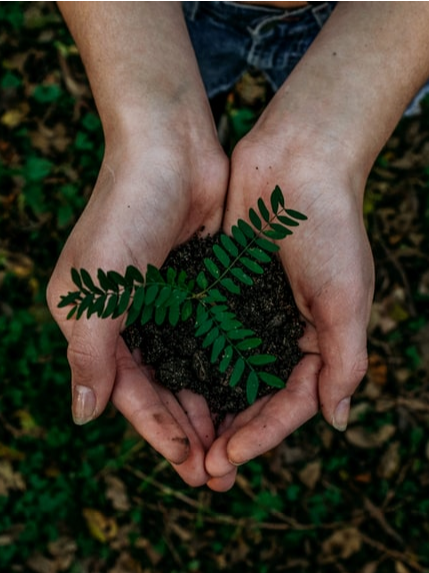

What is ECO-friendly packaging?
ECO-friendly packaging can also be called pollution-free packaging and sustainable packaging. It refers to packaging that is harmless to the ecological environment and human health, can be reused and recycled, and is in line with sustainable development. From a technical point of view, green packaging refers to a kind of environmentally friendly packaging developed from natural plants and related minerals that is harmless to the ecological environment and human health, is conducive to recycling, and is easy to degrade and sustainably develop. The life cycle of its packaging products from raw material selection, product manufacturing to use and disposal should meet the requirements of ecological environmental protection. Eco-friendly packaging should be implemented from three aspects: sustainable materials, packaging design, and vigorous development of the green packaging industry.
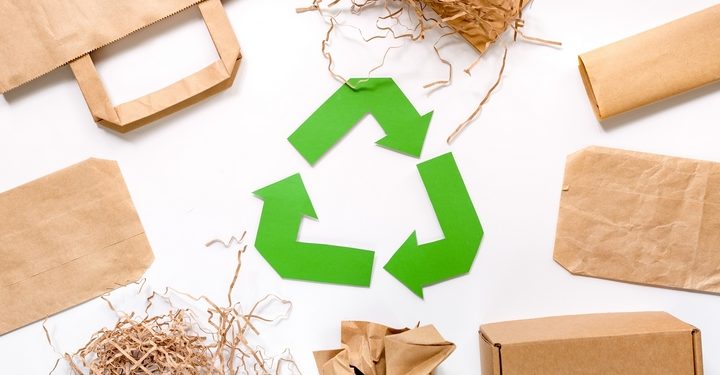
Its concept has two meanings: one is to protect the environment, and the other is to save resources.
The two are complementary and indivisible. Among them, protecting the environment is the core, and saving resources is closely related to protecting the environment because saving resources can reduce waste, which is actually the protection of the environment from the source in ECO-friendly packaging for cosmetics.
Whether you discard the biodegradable sugarcane packaging or reuse it for other purposes, you can rest assured that once you use the perfect products, they will not cause harm to the earth.
In essence: Eco-friendly packaging is to reduce energy waste during product design, production, and to minimize energy consumption. It can be recycled and reused, or it can be degraded in a simple natural environment.
The essence is to minimize the price of its damage to the ecological environment. Eco-friendly packaging is mainly manifested as the greening of raw materials for packaging production, the greening of packaging design, greening of packaging methods, greening of packaging operations, greening of production processes, use of greening, and recycling of packaging materials, etc.
Types of Eco-friendly packaging materials
Paper and cardboard is reusable, recyclable, and biodegradable in ECO-friendly packaging for cosmetics. There are a number of advantages to this type of packaging product, not least the fact that they are readily available. Many packaging manufacturing companies offer an environmentally friendly option that has been created using a high proportion of recycled paper.
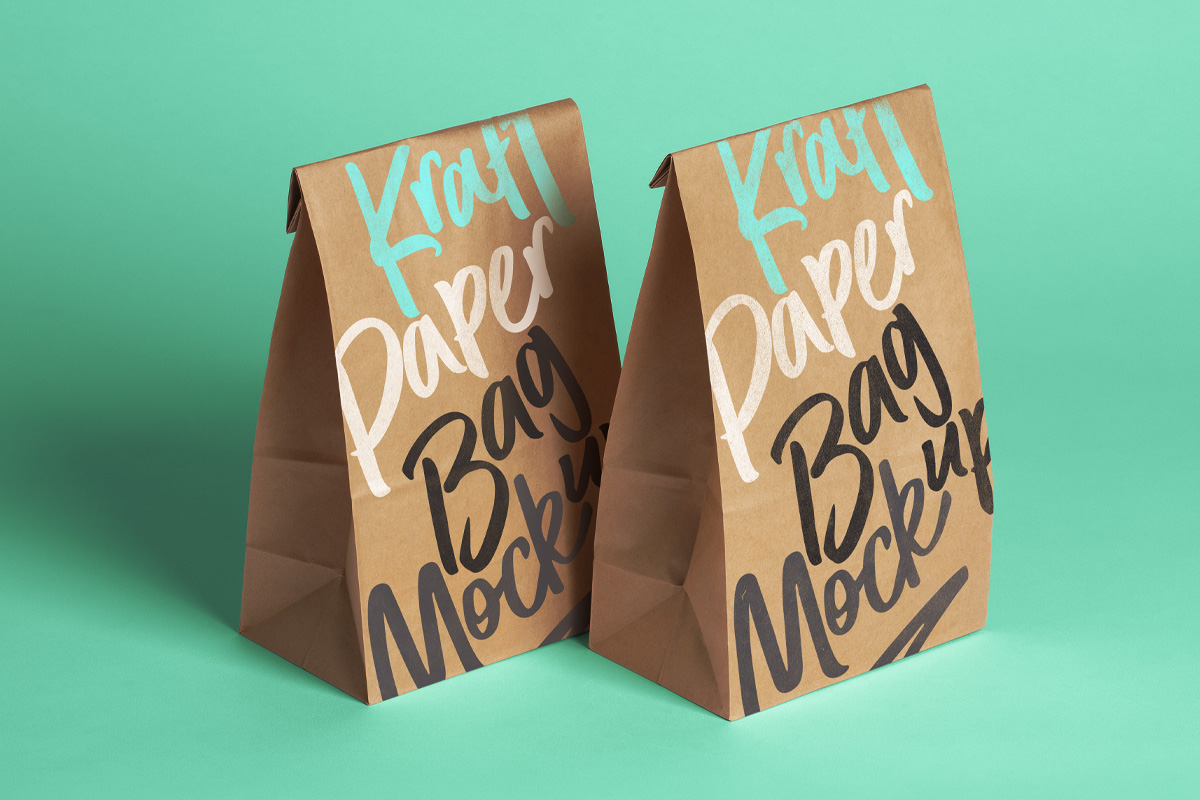
This is now commonly used in plastic bags and is also used in other items such as envelopes used for bulk mailing. This type of plastic starts to decompose when it is exposed to daylight and is a good alternative to traditional plastics.
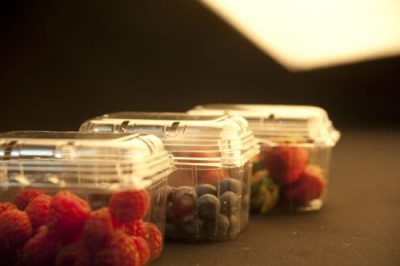
Ensuring all your items are properly insulated is important, regardless if you’re packing fine china or things that may be heartier. Using biodegradable packing peanuts is a great idea and can help the environment. These will make your packing easier and can allow you to remain eco-friendly
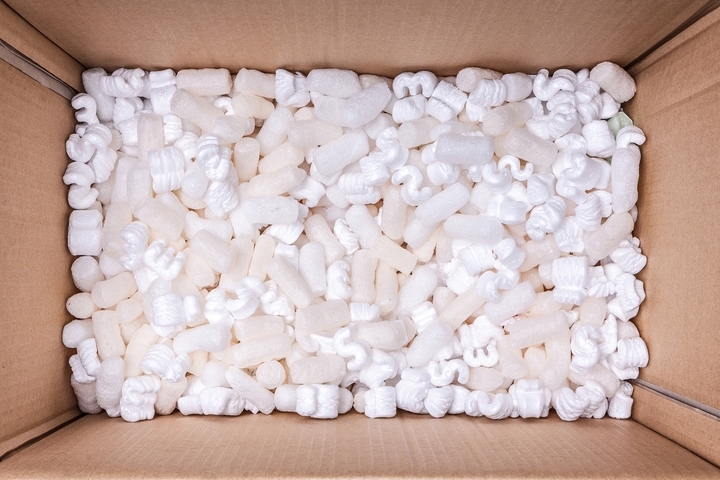
Adding inflatable air pillows to your packing supplies can be useful. These eco-friendly packaging materials are ideal to assist in ensuring all your belongings will have the right level of protection and cushion.
Fortunately, you can choose small bags that are filled up with air for this item. There’s likely to be much less damage to any of the goods you need to transport when you do. All these bags can be put to use by others at a later date. This is typically an inexpensive method for keeping your packaging materials good for the environment.
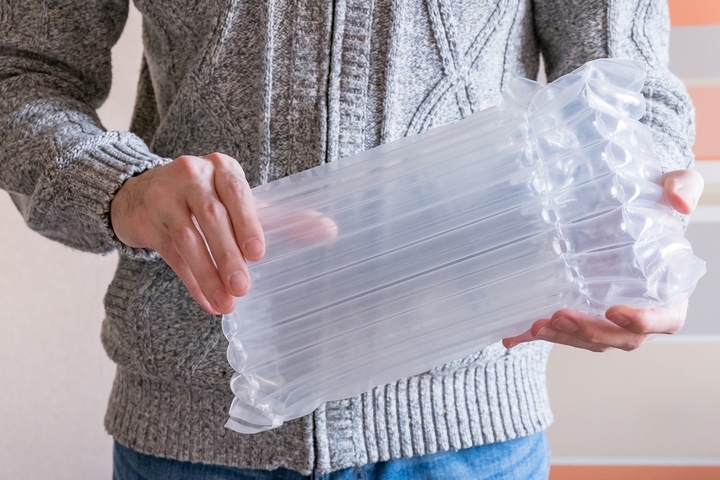
This is widely used as a packaging material. Environmentally friendly alternatives include bubble wrap made from recycled polythene and bubble wrap which is completely degradable.

The PP woven pack, as it’s name suggests, is made from polypropylene resin (PP), which is a recyclable thermoplastic material. Using this element in out production allows the development of light yet steady composition that can handle heavy weights.
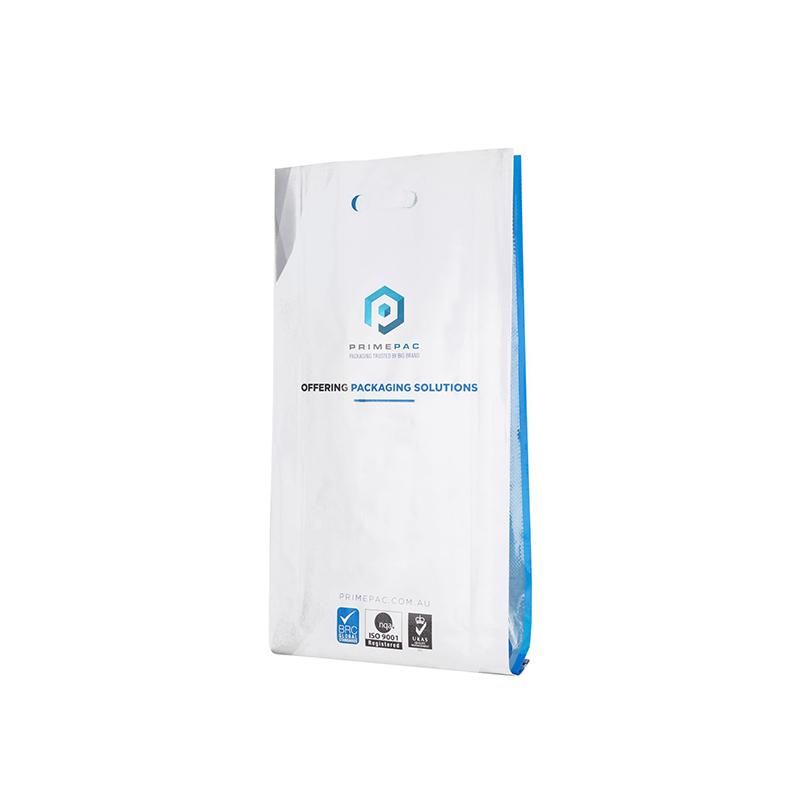
This packaging is made from mushrooms. It can be made from non-toxic materials and is an ideal method for working to have a better environment. You’re sure to enjoy the use of the mushrooms for a long time because this can make for durable packaging.

Why used eco-friendly packaging?
South Australia will become the first Australian state to ban plastic straws, cutlery, and drink stirrers under a plan announced by the state government.
The SA environment minister, David Speirs, said on Saturday the Liberal government would draft legislation to ban the single-use items this year before introducing the bill to parliament in 2020.
Plastic straws, cutlery, and drink stirrers are first on the agenda, and the government is also looking to ban takeaway polystyrene containers and cups in ECO-friendly packaging for cosmetics.
It is also considering outlawing items such as coffee cups and reusable plastic bags. South Australia was the first state to ban lightweight plastic bags in 2009.
Eco-friendly packaging for cosmetics - How to do?
Here are some tips on how to achieve Eco-friendly packaging for cosmetics:
The material is green
Packaging designers should try to use green packaging materials and design long-life packaging materials, which can greatly reduce environmental pollution after the packaging is discarded.
Packaging reduction.
In some developed countries, many supermarkets encourage consumers to use nylon shopping bags that can be used multiple times, but less disposable plastic bags. The materials used in packaging design are minimized, unnecessary packaging is eliminated as much as possible, and simple packaging is advocated To save resources.
Natural packaging materials
The materials used are as simple as possible, do not mix different materials in order to facilitate recycling.
Packaging design is detachable
Packaging that requires a composite material structure should be designed as a detachable structure, which is conducive to recycling after disassembly.
Pay attention to the reuse of packaging materials
The use of recyclable, reusable and recyclable packaging improves the life cycle of the packaging, thereby reducing packaging waste.
The harmlessness of packaging materials
The European Packaging and Packaging Waste Directive stipulates heavy metal content levels (lead, mercury, chromium, etc.), for example, lead content is less than 100PPM. my country should also prohibit or reduce the use of certain packaging materials containing harmful components such as lead, mercury, tin, etc. in the form of legislation, and specify the allowable content of heavy metals.

New trends of ECO-friendly packaging for cosmetics in 2020
Environmental issues affect people's lifestyles all the time, many packaging companies also actively respond to environmental protection. Make-up products-as indispensable products in daily life, ECO-friendly packaging for cosmetics, the industry has also begun to use sustainable raw materials in packaging design and application as well as various cosmetic packaging and product accessories.
This not only improves the product's design sense but also enhances a brand image for the product.
At the 2019 MakeUp in Paris, many exhibitors are showing their innovative products with novel green and environmental concepts in ECO-friendly packaging for cosmetics.
Let’s see what’s the new trends are!
Degradable plastic – Ecoform
At this exhibition, the most striking is a material called – Eco form, a recently launched material that is 100% biodegradable and is described as an ideal replacement for thermoformed plastic platforms or foam inserts (also synthetic) goods in ECO-friendly packaging for cosmetics.
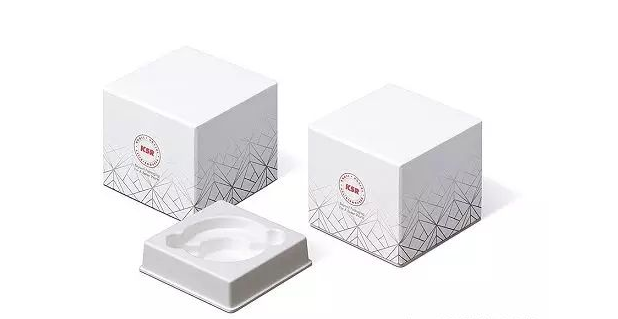
Usually, a lot of plastics are used in the packaging of cosmetics, and cardboard is not always suitable for cosmetics. It has no resistance and no elasticity, so this newly developed ecological plastic can replace traditional plastics well. It is completely made of green plants, made of bamboo, sugar cane, and wood, all of which can be recycled in ECO-friendly packaging for cosmetics.
Advanced eco-friendly brush
An innovative environmentally friendly brush called One Cut Brush has attracted much attention at the exhibition. In order to better match the new environmental trends, the exhibitors proposed 100% vegan products-synthetic hair and 100% wooden handles to customers, which is unique in the makeup brush market.
The customizable brushes are made of FSC certified light birch wood, and save the usual aluminum ferrule, creating a stylish, organic look.

The hair material used is Ecolon (a 100% animal-free, innovative synthetic fiber) that creates a soft, natural feel. The brush is resistant to water and solvents after treatment, both of which are important characteristics of the brush.
Reusable multi-purpose toolbox
As part of its “reuse” series, Texen Beauty Partners, a multi-purpose toolbox exhibited at Makeup in Paris, showcased the integrated beauty tool concept. One of the most representative is an 8ml press pen used for perfumes, make-up products or skincare products. Its inner box and lid are made of easy-to-recycle PP or even rPP.

Advantage of using Eco-friendly packaging
# Reduces your carbon footprint
Carbon footprint is the number of greenhouse gases that are released into the environment as a result of human activities.
The product lifecycle of packaging products undergoes various phases, from the extraction of raw materials to production, transportation, usage, and end of the life cycle. Each phase releases a certain amount of carbon into the environment in ECO-friendly packaging for cosmetics.
Eco-friendly packagings employ different methods in each of this process and hence reduce the overall carbon emissions, reducing our carbon footprint. Also, eco-friendly packagings release fewer carbon emissions during production and they are produced using highly recyclable materials which reduce our consumption of heavy-energy resources.
# Biodegradable
Green packaging not only reduces your carbon footprint and environmental impact but is also beneficial after it has served its purpose as the ECO-friendly packaging for cosmetics materials are biodegradable.
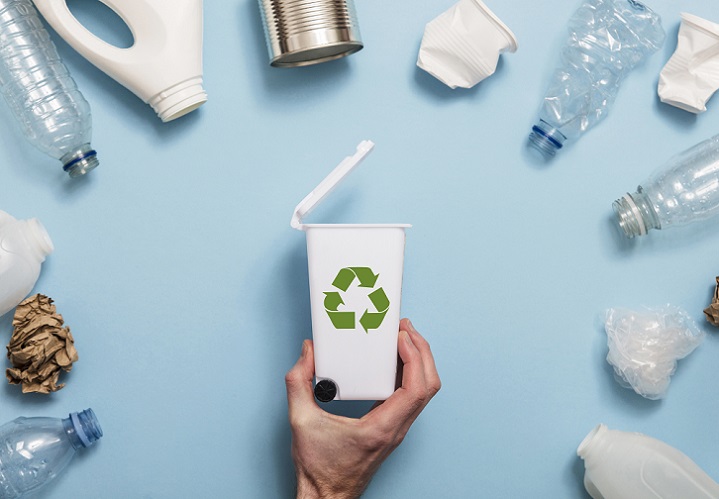
# Ease to Disposal
Packaging materials make up the majority of the trash that ends up in landfills. With e-commerce quickly becoming the most popular shopping method, consumers have more packages coming to their homes than they know what to do with. When you use eco-friendly containers for shipping, you make it easier for your consumers to get rid of all those ECO-friendly packagings for cosmetics. Compostable and recyclable containers are much easier to dispose of than ECO-friendly packaging for cosmetics that are not, and even when they do end up in landfills, they’ll break down much faster than their non-compostable, non-biodegradable counterparts in ECO-friendly packaging for cosmetics.
#Lower Shipping Costs
In addition to using recycled and biodegradable materials, ECO-friendly packaging for cosmetics supplies is designed with minimalism in mind. While they still provide effective protection for the items contained within, they are designed to be less bulky and require less overall material. This makes them weigh less and take up less space. ECO-friendly packaging for cosmetics that weigh less is, of course, more affordable to ship. With less packaging, it’s also possible to fit more packages on each pallet and in each shipping container. This can result in requiring fewer pallets or containers to ship the same number of products, which also leads to decreased shipping costs in ECO-friendly packaging for cosmetics.
# Become a part of the brand message.
These days people are getting more environmentally conscious in buying ECO-friendly packaging for cosmetics, they are constantly seeking out ways to make a positive impact on the environment without making any major changes in their existing lifestyle. By using eco-friendly packaging you are giving your consumer a chance to make a positive impact on the environment.
#No harmful plastic
Traditional packaging methods and materials contribute to global warming and other environmental issues. Using eco-friendly packaging allows you to reduce the amount of plastic that you use. Using non–sustainable petrochemical resources which are a part of all traditional plastics requires a lot of energy. Petrochemical products usually tend to litter public places and have been linked with health problems when used with food.
One of the biggest trends in life today
Consumer sentiment is raising awareness of waste and the environment. As a result, many manufacturers have brought sustainable packaging and made their products valued with regard to the environment. With our environmentally friendly food packaging series, we provide customers with financial, social, and brand equity products.
PCR packaging
PCR or post-consumer resins are the sustainable solutions of today’s environmentally friendly consumer product packaging choices. Still provide your customers with sustainable product types.
When using environmentally friendly food packaging, PCR provides many benefits.
Avoid further use of petrochemical resin
To prevent us from exhausting our limited fuel resources and make further efforts
Reuse plastic
Reduce landfill dumping
Can be recycled again for further manufacturing purposes
Like other PET plastics, the dynamics of production needs are happy
World history circular economy
Has the same sturdiness as PET plastic
Provide an appearance similar to PET plastic
Maintain a very low gas transmission rate
Resistant to cracking
Help branding your products and prove to customers that you care about the impact of plastics on the environment
Our products provide our customers with a full range of usability, size, shape, color, and suitable options.
We also provide solutions that can be customized according to your specific brand and needs.
Our existing basic manufacturing capabilities allow us to have a large population and allow us to adapt to any of your needs.
Bamboo packaging
Another sustainable development trend of bamboo is bamboo.
Bamboo is a plant that has been used in the world for several years, and now it has packaged the entire industry, construction, and textiles. It is fast-growing and sustainable.
The source of environmentally friendly food packaging, the impact on environmentally friendly food packaging, and the promotion of cleaner products. In food, bamboo represents a characteristic industry, as well as a sense of luxury.
The benefits of bamboo are:
Strength and customary tradition.
Reusable and recyclable
growing up very fast
Local purchase
Biodegradable and compostable
Paper packaging
The perfect substitute for plastic, it can be used in your balm, cream, or lotion series. Our paper cans and decorative tubes are the best choice for the perfect shape and oil-proof invisibility.
The development of eco-friendly cosmetic packaging
But eco-friendly cosmetics packaging design isn’t usually a criterion for clean beauty or sustainable skincare products.
Why? Marketers commonly push the narrative that it’s what’s on the ‘inside’ that matters (which may be true for beauty, but the outsides count when it comes to packaging!).
When consumers search for ‘best clean beauty brands’ or ‘eco-friendly beauty products, and they will find plenty of information about what a product is ‘free of’.
What is much harder to find is information on whether it’s been packaged sustainably.
This is a major problem, as there are 2.5 billion plastic bottles hitting the landfill every year. The beauty industry is a major contributor, as most of its bottles and containers are designed to be single-use.
Multi-layered packaging to make products look more ‘premium’ also creates excess waste.
This is an issue that consumers also contribute to. A study of UK consumers discovered that while 90% are recycling kitchen waste, this plummets to 50% for bathroom waste.
So, it’s safe to say that the cosmetics industry is lagging behind on eco-friendly packaging innovations.
Why does sustainable cosmetics packaging matter so much?
With much greater awareness about plastic pollution, sustainable packaging is actually becoming a serious selling point for consumers.
Dotcom Distribution’s latest study found that 62% of consumers would rather buy from brands with eco-friendly packaging. In fact, McKinsey has rated sustainable packaging as the biggest ‘green premium’ that consumers will pay extra for!
But when you market yourself as a ‘green’ beauty brand, having a sustainable cosmetics packaging design carries another level of importance.
Using eco-friendly containers for beauty products has more than just positive environmental effects. It’s about preserving (and enhancing!) your brand image.
Sustainable brands in any industry face greater scrutiny over their business practices, and with good reason.
Consumers are very alert to ‘greenwashing’ practices and are on the lookout for signs of authenticity.
A sustainable packaging initiative shows consumers that a brand actually practices what they preach.
For example, Ethique Beauty is a brand that sells eco-friendly personal care products.
Their flagship product is ‘bars’ of hair products and deodorants. Selling in bar form means they avoid plastic bottles and aren’t contributing to plastic pollution.
For shipping, they package the bars plastic-free in 100% compostable cardboard sleeves.
Conclusion:
Eco-friendly packaging for cosmetics , you must first understand what is Eco-friendly packaging, and what are the widely used materials in those sustainable packaging. The use of sustainable raw materials combined with a fashionable design is the new trend of Eco-friendly packaging for cosmetics. Follow us to learn more about packaging trends and developments! If you also find this article interesting, please share it with more people in need!
About PeimePac
At PrimePac, we bring together design experts and brand innovators to create fresh ideas, customized packages, and fully efficient processes.
We design creative packaging solutions that cater to a diverse global audience with the in-house knowledge and network of experienced professionals to meet the demands of every type of client.
From our dedicated sales team and warehouse staff in Australia to the experts at our production facilities in China, all of our employees are guided by four core values at the heart of our business in ECO-friendly packaging for cosmetics: integrity, innovation, passion, and engagement.
Network
With our team in China and Australia working as one, we reduce inefficiency so that you deal with one streamlined team from manufacturing right to delivery.
Service support team located in Guangzhou, the manufacturing hub of China, providing rapid response, and local industry knowledge in ECO-friendly packaging for cosmetics. Warehouse and 3PL network located in Sydney, to provide rapid distribution, and delivery to your customers.
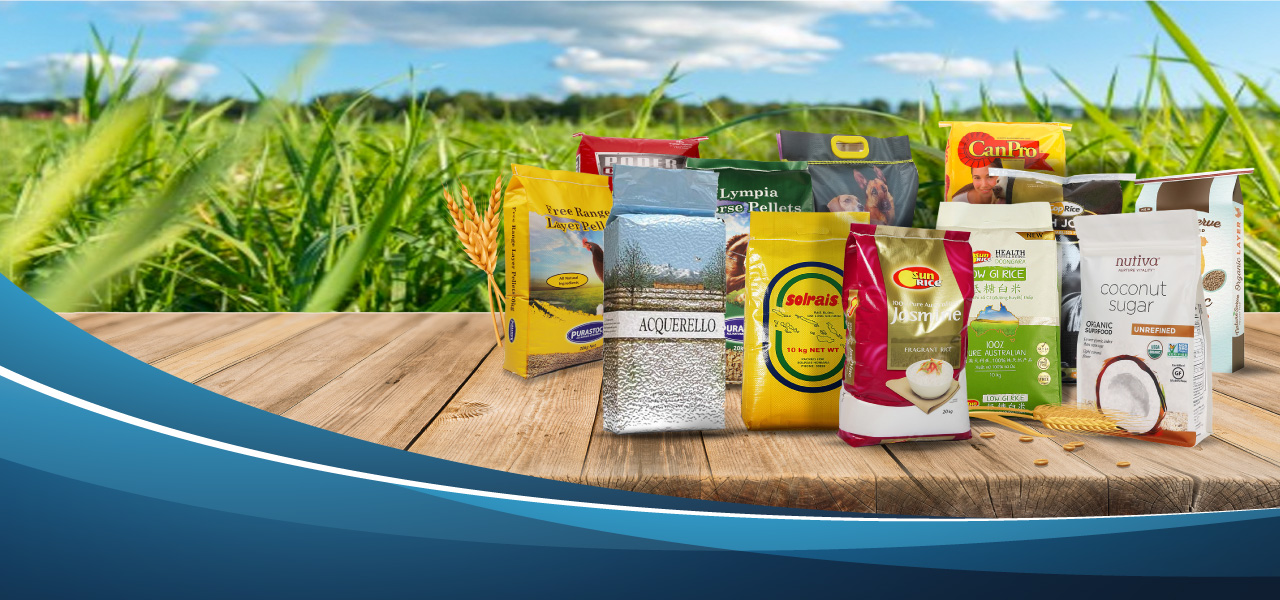
Why Choose Flat Bottom Bag - A kind of popular packaging
This form of flat bottom bag packaging is an improved version of the standard vertical bag. Flat bottom bags are popular products in the packaging industry, especially for food products. It has many optional added extras such as matte print finishing, grip seal closure, or tear notches.
In this article, we first introduce what are the characteristics of flat bottom bags, then introduce the advantages of flat bottom bags and why we love custom flat bottom bags and finally explain the market prospects of flat bottom bags.
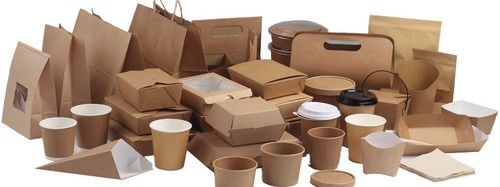
Ever What is Flat bottom bag?
Just as its name implies is eight at the bottom of the sealing side, four sealing sides of the side of each side two sides, this bag is nearly two years the rise of a new bag. Flat bottom bag because of its good stereo feeling, show class looks, high-end atmosphere, popular with consumers.
Flat bottom bags have a flat bottom that makes them stand upright on shelves or wherever one places them. This is one of the most resourceful qualities flat-bottom stand-up bags possess.
These bags have a gusset (a triangular insert/bracket for added strength or expansion) on the right and left side, as well as at the bottom too! These gussets on flat bottom bags make them look attractive as well as supports the design and structure of the bag to make it stand upright and to better fit into packaging requirements of versatile industries.
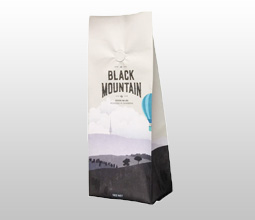
They consist of three layers, which can firmly keep the product inside, and can be recycled and decomposed. And it has a distinctive design that gives it an attractive shape to customers, this exclusive form gives large storage space and gives enough space to put your own design and use the space in the front and back.
What are the characteristics of flat bottom bag?
Vivid color printing, independent, with a resealable zipper and ventilation holes. With a flat bottom and side gusset, the Flat bottom bags can stand up well on the shell, so as to attract the clients’ eyes more easily.
With a flat bottom and side gusset, the inside space of the bag is enlarged a lot, which achieves a much larger volume for holding goods. Customized material, thickness, size, shape, and design are welcome.
Strong sealing, easy-open fresh fruit bag. There are 2 sets of cylinders required for the Flat bottom bag, one set for the front and bottom. And Back Panel, the other set for the right and left side gusset. The two parts will be printed separately and then combined together by heat sealing.
Food grade packaging supplies, eco-friendly ink, non-toluene workshop condition. Realistic & lively print effect help upgrade the image and competition.
What is the use of flat bottom bags?
Flat bottom bags can be used in the packaging of many industries such as food packaging, animal food packaging, organic product packaging, and many other uses.
You can add an extra fitment in a flat bottom bag:
Zipper (Make it easier to open the bag and maintain it)
Suspension holes (to hang the bags instead of placing them on the shelves)
Degassing Valve (to keep the product from exposure to air and the expulsion of industrial gases)
Laser scored tear notch for easy tear and opening.
Flat bottom bags are the innovative alternative to a folding carton or corrugated box. Unlike a bulky box with an ineffective inner liner, flexible box bags have a small footprint and keep products fresh longer. No more squeezing big boxes into the cupboard and rolling up liner bags once the product has been opened – flexible box bags make it convenient for you and your customer to store, transport, access, and consume your quality product.
Our customers use Flat bottom bags to package anything that would traditionally go in a box with an inner bag, such as cereal, granola, crackers, and snacks. The flat bottom mimics a box, allowing the pouch to stand effectively, while side gussets provide more space for labels and branding than traditional stand up bags.
In addition, flexible box bags are made with heavy duty barrier film that protects the bags’ contents from moisture, odor, puncture, and other hazards and contaminants. That means your product stays fresher, longer, even once the packaging has been opened (unlike those worthless liners!)
Best of all, our Flat bottom bags use up to 15% less film than typical stand up bags, but hold more volume. Each bag has five printable surfaces perfect for brand building, can be printed in up to 12 colors, and is available in clear, metalized, and foil structures. Functional zipper tops complete our flexible box bags, guaranteeing that your customers can easily reach their fresh, favorite products again and again.
What is the advantage of flat bottom bags?
1、Flat bottom bag is three flat bags that are best suited for thin-film material of flat bag type. The advantages of the packaging as thin-film materials and flat stand shelves visual representation, the volume, higher than that of the traditional vertical bag is the new choice of traditional film type vertical bag upgrade. The tensioning chain can be used repeatedly, which is convenient to use, to avoid the failure of the tensioning chain on the organ bag, and a one-way valve can still be added.
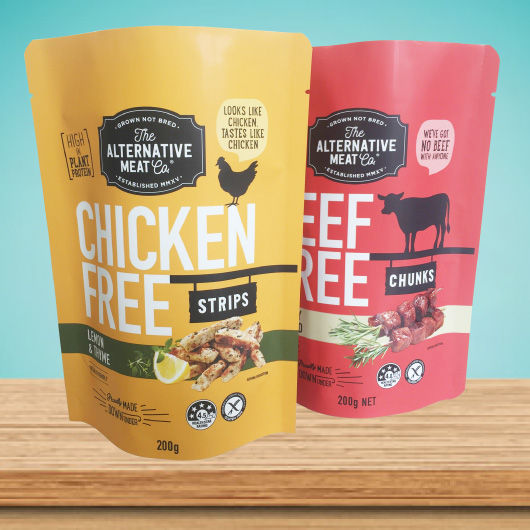
Flat bottom style bags are the newest kid on the block. This pouch style is getting more famous for high-end food product packaging companies. Flat bottom bags are most expensive than any other type of flexible packaging bags. But due to good looking and convenience, the bags are getting famous.
3、Flat bottom bags have many names like box pouch, box bottom bags, block bottom pouch, square bottom bags, box pouch with valve, quad sealed flat bottom, block bottomed bags, three side gusset bags, brick pouch, etc.
4、Flat bottom pouch looks like a box or brick style. These bags have gussets on the left and right sides and gussets on the bottom. We can fix zippers in bags as optional. We can also give pocket zip zippers fitted in flat bottom bags.
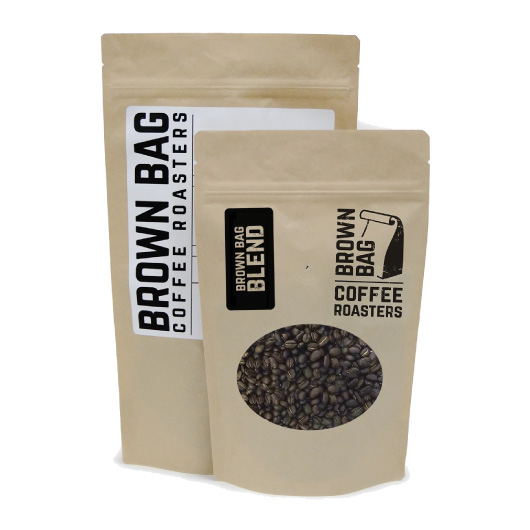
5、Flat bottom bags can save 15% of packaging material due to the unique design. So these bags are called environment-friendly packaging bags. We can also save shelf space in the supermarket as the bags stands tall and the width of the bags is less compared with stand up bags. So this style bags can save money for the food manufacturer by paying less to supermarket shelf space.
6、We can fix Degassing valves for coffee packaging. The bags are used to pack Pet food, organic products, chocolates, powders, spices, muesli, biscuits, tea etc. We can personalize flat bottom bags by printing in advanced rotogravure machines up to 9 colors. Customized printing is possible in brown kraft paper, white poster paper, PET, foil, BOPP.
Can be customized to suit your flat bottom bags
Customization: We have two options for all our clients.
1) In Stock/Ready Bags
2) On Custom Printed Bags
If you wish to customize i.e. make changes in color, size, print, or features of the stand-up bags you need or you have selected, we can do it for you fluidly.
On the other hand, we have banked an amazing collection of stand-up bags ready to be shipped!
Rotogravure Printing: Attraction is directly related to something beautiful, something attractive. To attract your customers, we use Rotogravure and Flexographic printing.
Rotogravure printing has changed the way stand-up bags look. It is attractive, quick, and budget-friendly too!
Auxiliary Tools/Accessories: We did not wish to make our clients wander in search of auxiliary accessories required to fill the stuffs in bags/bags.
So, we decided to transform ourselves into a One Stop Shop Solution for All your Packaging Needs, by providing accessories such as heat sealers, filling machines, and more under one roof, here at Smart Bags.
Our flat bottom bags give your product maximum shelf stability, and superb protection, all wrapped in an elegant and distinctive look. The gusseted sides and quad seals offer a stronger structure and more filling volume than other bags, making them a great choice for coffee, candy, pet food and treats, and other dry ingredient food products. We can custom-print over all five panels, providing enhanced artwork and design possibilities. Flat-bottom bags, also called Flat bottom bags, are a good “green” choice, too, requiring less energy to produce and less material than in traditional stand-up bags.
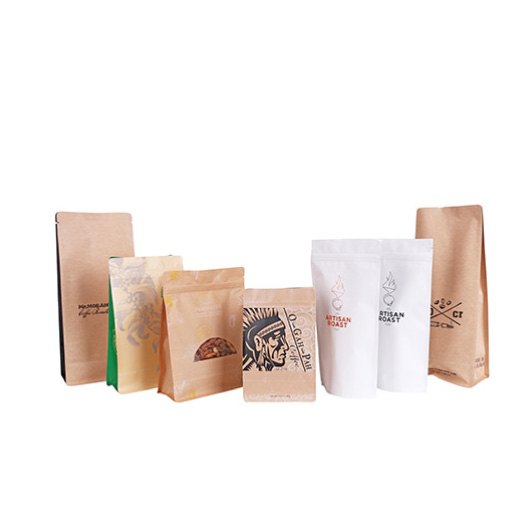
Flat Bottom Bags – Market Outlook
The flat bottom bags have high demand in the market owing to the fact that the bag offers shelf stability due to its sturdy level bottom. The base is flat and secure is ideal for packaging solutions for many consumer products such as rice, tea, coffee, cereal, and many more. Thus, the outlook for the growth of the global flat bottom bags market is expected to remain mostly positive during the forecast period.
In addition, flat bottom bags are produced with the help of the higher quality films to enhance the durability and flexibility of the pouches. Flat bottom bags can also be customized to suit individual product and brand so that it has high resistance to the pressure that decreases the chances of package rupture. One of the driving factors of flat bottom bags market is that these bags can be produced with lamination and metalized lining that helps in keeping excess moisture out, which keeps products fresher for a longer time.
Conclusion:
In the world of packaging, there are many ways to stand out. But the Flat bottom bags makes a statement. It combines the benefits of a traditional side gusseted bag and stand-up pouch, and rolls it into a package that sits narrow on the shelf, doesn’t tip over, and squares up like a box. Flat bottom bags have unique advantages and can be customized according to demand, and have a strong market prospect.
About PeimePac
At PrimePac, we bring together design experts and brand innovators to create fresh ideas, customized packages, and fully efficient processes.
We design creative packaging solutions that cater to a diverse global audience with the in-house knowledge and network of experienced professionals to meet the demands of every type of client.
From our dedicated sales team and warehouse staff in Australia to the experts at our production facilities in China, all of our employees are guided by four core values at the heart of our business: integrity, innovation, passion, and engagement.
Network
With our team in China and Australia working as one, we reduce inefficiency so that you deal with one streamlined team from manufacturing right to delivery.
Service support team located in Guangzhou, the manufacturing hub of China, providing rapid response, and local industry knowledge. Warehouse and 3PL network located in Sydney, to provide rapid distribution, and delivery to your customers.

About fruit and vegetable packaging you may wonder
Fruit and vegetable packaging is a farm practice that involves taking fresh crops from the field to the customer. Since all fruits and vegetables are perishable crops, choosing the right packaging for fruits and vegetables is crucial for farmers to survive in the market. The main function of packaging is to maintain fruits and vegetables in order to maintain their quality and extend the storage life.
More importantly, fruit and vegetable packaging represents an integral component in marketing management. As a matter of fact, a package is a way of communication with the customers, and therefore, it’s directly related to the sales strategy in fruit and vegetable packaging.
In this article, we first introduce the types of fruit and vegetable packaging and then explain how we should choose fruit and vegetable packaging. Finally, the trend of fruit and vegetable packaging is analyzed in detail.

Types of Fruit and Vegetable Packaging
Regarding its function, fruit and vegetable package can be observed in two ways:
Primary package:
The layer of the package which is in direct contact with the product; usually offered to the customer
Secondary package:
Holds the primary package during transport and storage, and therefore facilitates its handling
Regardless of its function, there are various types of fruit and vegetable packages. These include:
# Containers:
a cost-effective method for packing crops that are not so susceptible to physical damage, such as melons, pumpkins, yams, potatoes, and cassava. After the harvest, crops are stacked into a container which is fitted to a transport vehicle and delivered to the customers without using any other package.
# Woven baskets:
Commonly used by small-holder farmers and made of locally available materials. These baskets provide very good ventilation for crops. However, their rough materials can damage the crops during transport and handling.
# Bags:
A relatively cheap packaging type, suitable for crops that are not so susceptible to physical damage, such as potatoes, onions, pumpkins, or melons.
Modified atmosphere package; a special package created by removing the air from the package and replacing it with a single gas or a mixture of gases. The carefully managed gas mixture within the package maintains an optimal crop respiration rate and extends crop storage life and quality.
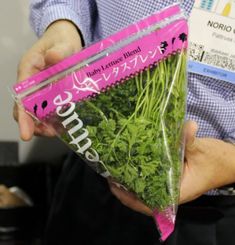
# Vacuum package:
A type of package in which oxygen was removed completely and the product is sealed in air-tight conditions
A Few Lessons About Choosing the Right Package
Farming is a very special activity that is highly dependent upon natural processes. In regards to that, every farm management should be unique. Each farmer’s decision, as well as each farm practice, can result in unexpected results. The same is with crop packing management. In order to manage crop packing successfully, while deciding on the right crop package, farmers should keep in mind a few of the following tips:
-
Crop requirements:
each crop has its own package requirements, for instance, berries are much more susceptible to damage than apples, and therefore, they require carefully managed packing.
-
Crop transport and storage management:
there is a difference between packing the crops that will be directly delivered to the market, and crops that will be stored for a certain period.
-
The storage:
crop package should be in accordance with the type of storage (CA storage, cooling storage, simple storage facilities, pre-cooling), as well as with the duration of the storage (short-term or long-term storage).
-
Message to customers:
the package is a way of communicating with the customers. Therefore, before packing their fruits and vegetables, farmers should consider how they want to present their products to customers.
-
Value for money:
when deciding on crop package, a farmer should be aware of his own financial possibilities. Besides that, for certain high-value crops (e.g. blueberries), farmers can afford higher costs of packaging. On the other hand, for crops such as potatoes, farmers prefer using more affordable packaging solutions.
In order to effectively bring advertising messages and important product information to the packaging, we should collaborate with an experienced advertising agency, which in turn closely cooperates with the packaging manufacturer who ultimately manages the printing of the fruit and vegetable packaging.
He also competently advises which printing method best suits the planned product and its specific requirements: flexographic, offset, or digital printing. In all the printing methods mentioned above, it is possible to resort to food-compatible inks in order to exclude the pollution of the product by the printing inks.
Six trends in fruit and vegetable packaging
Consumers are more concerned than ever about what they eat and where their food comes from. The growing demands in terms of health, sustainability, and organic production determine not only what customers eat but also the purchasing behavior of modern consumers.
At the same time, the variety of food products is increasing enormously – there are also constantly changing breeds and new varieties in the fruit and vegetable sector. Along with these changes, the packaging requirements are changing as well.
Trend 1: Sustainability along the supply chain
Eco is in! The desire for sustainable food ranges from production, up the value chain, into the kitchen. Packaging plays an important role throughout the supply chain – in terms of freshness and protection of goods, quality, and labelling. Corrugated cardboard or full cardboard packaging is not only nearly 100 per cent recyclable, but it is also made from renewable raw materials, which has a positive impact on the CO2 balance.
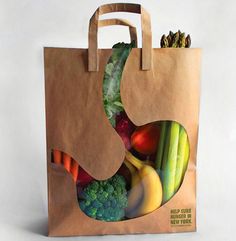
In addition, such packaging is much more natural than plastic and is rightly perceived by consumers as sustainable and environmentally friendly. For this reason, supermarkets and discounters are increasingly using cardboard instead of plastic in the packaging of fruit and vegetables, as in the case of cherry tomatoes, for example, which are increasingly available today packed in printed corrugated board trays.
Trend 2: Promoting the regional character
Many growers already know that in the case of fruit and vegetables, the regional origin of the products is even more important to consumers than biological or ecological considerations or fair guarantees. This was again confirmed by the study “Fruits and Vegetables 2016” by market research institute Mafowerk. The downside: Regional products are not available year-round in Germany.
As a result, more and more German producers are growing their fruits and vegetables in greenhouses. For consumers, this means for example that in November there are still strawberries from Franconia – instead of Peru. On the one hand, for the growers, this means a longer season and thus a competitive advantage over fruit and vegetable suppliers from abroad. On the other hand, smaller farms also have to learn to play their regional trump card: their own name, logo, and, of course, the region should be printed directly on the packaging. Packaging of cardboard or corrugated board is particularly suitable here because of the good printability of the material. And this is how regional producers stand out from their competitors in Italy, Spain, and so on.
Trend 3: Optimum advertising effect through a variety of printing processes
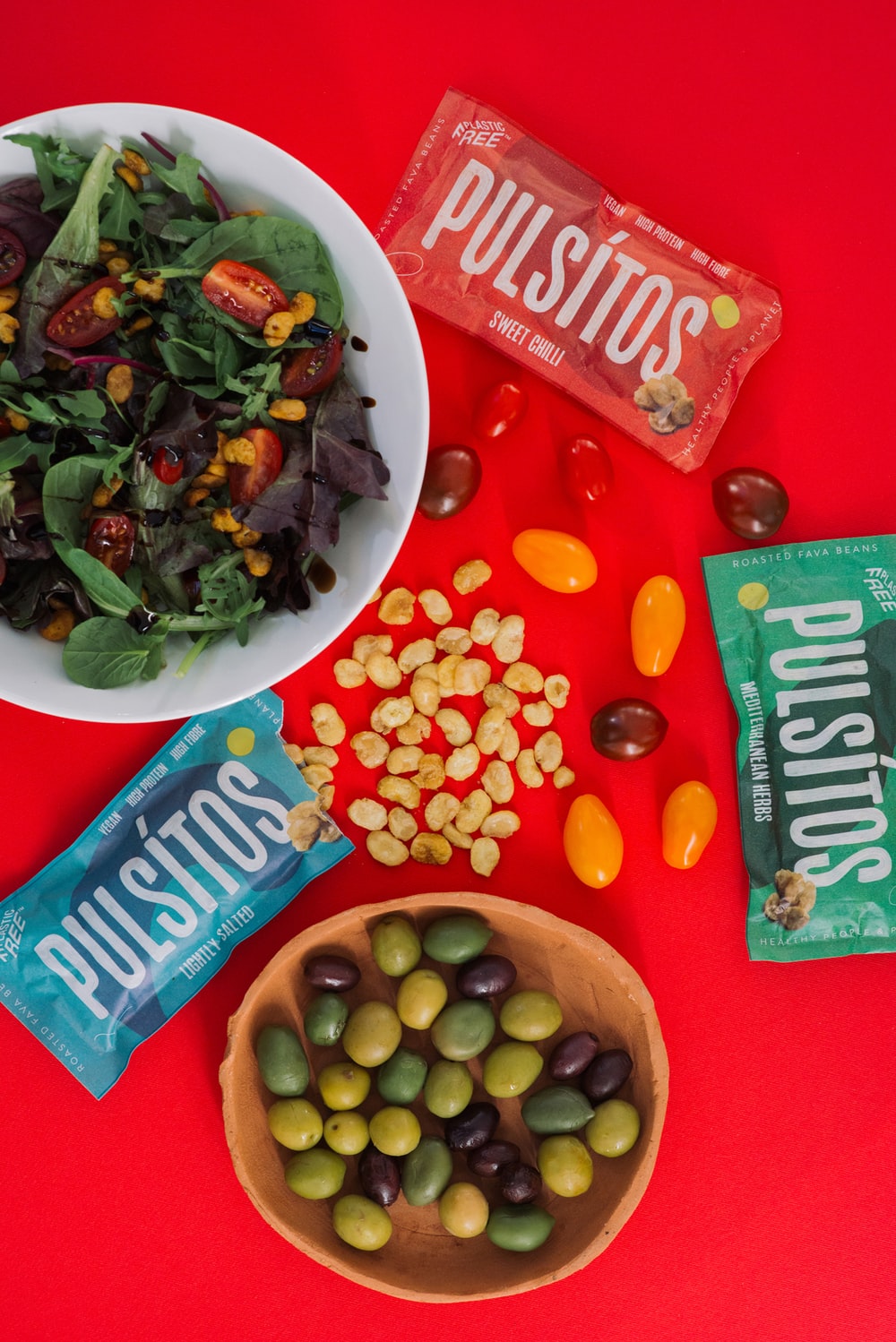
Trend 4: Flexibility and proximity in terms of logistics
High-yield harvests, lean harvests, a short-term harvest time, or the sudden increase in demand for regional produce due to trade promotions – in the fruit and vegetable sector, flexibility is extremely important. As a result, growers should source their packaging from a regional supplier who offers flexible delivery times, variable purchase quantities, and who offers to store the packaging until harvest time.
Trend 5: New packaging sizes and shapes
Changes in the shape and size of fruits and vegetables also require adaptation of the packaging. For example, the so-called small farmer’s cucumbers have already displaced the well-known larger cucumbers, and the trend continues towards still smaller specimens: the even smaller snack cucumbers. This also means that the size of the primary packaging, for example, a vegetable tray for the snack variant of the classic cucumber, as well as secondary packaging and packaging units must be adapted to this trend in fruit and vegetable packaging.
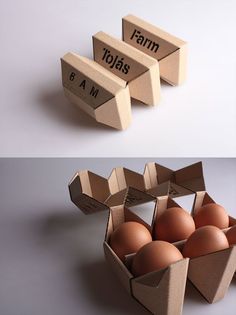
Trend 6: Changed material requirements
Foods that are shrink-wrapped in plastic could be rated worse in their actual quality than goods in an open cardboard box. However, paperboard fruit and vegetable packaging are particularly complex due to the moisture of the packaged products. For example, cucumbers are packed in cellophane before entering the vegetable rack, which is conducive to shelf life.
Alternatively, growers may provide fruit and vegetable trays with special paper grades or coatings that prevent moisture from entering the carton. An important role in material selection also plays a role in how fruit and vegetables are stored across the supply chain, for example in cold stores, during the transport route, and for which period of time.
Fresh fruit and vegetable packaging
The packaging of fresh fruits and vegetables is a fast and streamlined process. We understand your needs for flexibility and provide tailor-made solutions for the efficient processing of your fresh produce.
From flat packaging to ready-to-use top boxes and trays.
Our packaging solutions are used in automatic and manual production processes.
Manual processing, external setup services, or automation may be the best solution for you, depending on your operational capabilities.
With a huge network of setup stations and machine suppliers, we can advise you on how to effectively set up the packaging process with a transparent cost structure.
Intelligence in the greenhouse also means sustainable selection and smart inventory management.
We will deliver it at the exact time you need the packaging and keep it in stock.
Packaging provides protection, tamper resistance, and special physical, chemical, or biological needs.
It may carry nutrition labels and other information about foods available to consumers in local and international markets.
The packaging of frozen foods such as fruits and vegetables is divided into three types, namely primary, secondary and tertiary.
The primary packaging is in direct contact with the food, and the food can be kept in the packaging until it is used.
Secondary packaging is a form of multiple packaging used to process packages together.
The tertiary packaging is basically an extra layer on the secondary packaging used for bulk transportation of products.
The role of packaging in the fruit and vegetable industry
The packaging of fresh fruits and vegetables is one of the important steps in the long and complicated journey of fruits and vegetables from farmers to consumers.
Bags, crates, baskets, baskets, cartons, bulk boxes, and pallet containers are convenient containers for handling, transporting, and selling fresh produce.
Although the industry generally believes that container standardization is a way to reduce costs, the trend in recent years is to adopt a wider range of packaging sizes to meet the diverse needs of wholesalers, consumers, foodservice buyers, and processing operators.
Packaging and packaging materials contribute significant costs to the agricultural product industry;
therefore, it is important that packagers, shippers, buyers, and consumers have a clear understanding of the various packaging options available.
The main function of packaging
A properly designed product container should contain, protect and identify the product.
The packaging should be very attractive, and everything should be clearly mentioned on the packaging.
The important keys in some of these packages are given below.
1. Variety
2. Recyclability
3. Sales appeals.
4. Shelf life.
The following are the more important general requirements and functions of food packaging materials/containers:
1. It must be non-toxic and compatible with specific foods.
2. Hygiene protection, moisture-proof, grease-proof, gas-proof, and odor-proof.
3. Shading, impact-resistant, transparent, and easy to open.
4. Re-seal function, easy to handle size, shape, and weight restrictions.
5. Appearance, printability and low cost, special functions, etc.
Frozen packaging of fruits and vegetables——
1. The packaging material should be moisture-proof to prevent evaporation, so as to maintain the highest quality of frozen food.
2. Non-rigid containers include bags and sheets made of moisture-proof, thick aluminum foil, polyethylene, or laminated paper.
3. Bags are the most commonly used packaging materials for frozen fruits and vegetables because of their flexibility in processing and handling. They can be used with or without external cardboard boxes to prevent tearing.
With research and analysis, the future of fruit and vegetable packaging and the food industry has a long-term and broad market and export in India.
The fruit and vegetable industry, like the packaging industry in this industry, has good entrepreneurial opportunities.
In addition, the Indian government is also promoting and providing large amounts of funds and opportunities to develop fruit and vegetable processing industries so that these industries can achieve large-scale growth.
How to choose the right fruit and vegetable packaging?
Fruit and vegetable packaging is a farm practice that involves transporting fresh crops from the field to the customer. Given that all fruits and vegetables are highly perishable crops, choosing the right fruit and vegetable packaging is crucial for farmers’ survival in the market.
The main function of packaging is to preserve fruits and vegetables to maintain their quality and extend their storage life.
More importantly, fruit and vegetable packaging is an indispensable part of marketing management.
In fact, parcels are a way of communicating with customers, so they are directly related to sales strategies.
Types of fruit and vegetable packaging
Regarding its function, fruit and vegetable packaging can be observed from two aspects:
Primary packaging: the packaging layer in direct contact with the product; usually provided to customers.
Secondary packaging: the primary packaging is maintained during transportation and storage, so it is easy to handle
Regardless of its function, there are various types of fruit and vegetable packaging. These include:
Container: a cost-effective method for packaging crops that are not susceptible to physical damage, such as melons, pumpkins, yams, potatoes, and cassava. After harvest, the crops are stacked in a container, which is mounted on a transport vehicle and delivered to the customer without using any other packaging.
Cardboard: wooden or plastic boxes or crates; a widely accepted way of packaging various fruits and vegetables. These boxes come in various shapes and sizes and are suitable for different products.
Woven basket: It is usually used by small farmers and is made of locally available materials. These baskets provide very good ventilation for the crops. However, their rough materials can damage crops during transportation and handling.
Bag: a relatively inexpensive type of packaging suitable for crops that are less susceptible to physical damage, such as potatoes, onions, pumpkins, or melons.
Modified atmosphere packaging; special packaging made by removing air from the packaging and replacing it with a single gas or gas mixture.
The carefully managed gas mixture in the package can maintain the best crop respiration rate and extend the storage life and quality of the crop.
Vacuum packaging; a type of packaging that completely removes oxygen and seals the product in an airtight condition
Some lessons about choosing the right packaging
Agriculture is a very special activity, highly dependent on natural processes. In this regard, each farm management should be unique.
Every farmer’s decision, and every farm’s practices, can lead to unexpected results. The same is true for crop packaging management.
In order to successfully manage crop packaging, farmers should keep the following tips in mind when deciding on suitable crop packaging:
1. Crop requirements; each crop has its own packaging requirements. For example, berries are more susceptible to damage than apples, so they need to manage their packaging carefully.
2. Crop transportation and storage management; there is a difference between crops directly delivered to the market and crops stored for a period of time.
3. Storage; crop packaging should be classified according to storage type (CA storage, cold storage, simple storage facility, pre-cooling) and storage period (short-term or long-term storage).
4. Messages to customers; parcels are a way to communicate with customers. Therefore, before packaging fruits and vegetables, farmers should consider how to show their products to customers.
5. Good value for money; when deciding on the packaging of crops, farmers should understand their financial capabilities.
In addition, for certain high-value crops (such as blueberries), farmers can afford higher packaging costs.
On the other hand, for crops such as potatoes, farmers prefer to use more affordable packaging solutions.
Some farmers do not pay attention to crop packaging. However, choosing the right packaging for the crop can be a turning point in maintaining yield and maintaining crop quality.
Most importantly, crop packaging will determine the success of farmers in the market.
Conclusion:
Some farmers do not add importance to crop packaging. However, choosing the right package for crops can be a turning point for preserving the yield and maintaining crop quality. Above all, crop packaging will determine a farmer’s success on the market.
The current trend of fruit and vegetable packaging has reached personal benefit. We recommend that farmers use an excellent vegetable and fruit packaging company, and they will advise agricultural producers on the packaging of fruit and vegetable varieties.
About PeimePac
At PrimePac, we bring together design experts and brand innovators to create fresh ideas, customized packages, and fully efficient processes.
We design creative packaging solutions that cater to a diverse global audience with the in-house knowledge and network of experienced professionals to meet the demands of every type of client.
From our dedicated sales team and warehouse staff in Australia to the experts at our production facilities in China, all of our employees are guided by four core values at the heart of our business: integrity, innovation, passion, and engagement.
Network
With our team in China and Australia working as one, we reduce inefficiency so that you deal with one streamlined team from manufacturing right to delivery in fruit and vegetable packaging.
Service support team located in Guangzhou, the manufacturing hub of China, providing rapid response, and local industry knowledge. Warehouse and 3PL network located in Sydney, to provide rapid distribution, and delivery to your customers.

Window packaging in our daily life
Traditional packaging often hides the product inside the package, but modern designers are trying to overthrow this model and display the product in the packaging. Create a window in the packaging to display the product, so that consumers stay and notice, this is window packaging. Product packaging should increase simplicity, authenticity, and meaning. Packaging must be important as the first step in reaching consumers. Want to stand out from similar products, not only have good quality but also have outstanding packaging! This article mainly explains why window packaging is important to food and the benefits of window packaging in the Health and Beauty industry.

Why window packaging is important to food
All kinds of commodities have their own characteristics, and food packaging also has its distinctive characteristics. In addition to paying attention to its practicability, convenience, and safety, food packaging begins to pay more attention to its high quality, high taste and high-end sense.
Window packaging has become famous all over the world. It is considered to be the best packaging solution. Although window packaging has become popular in various fields such as clothing, cosmetics, etc., it has become the preferred choice of entrepreneurs, especially in the food industry. Window glass is widely used in food boxes. The main reason is that window boxes increase the visual appeal of the product and make it highly attractive to the customers. When customers can clearly understand the attractive contents inside, it stimulates their buying behavior. Window boxes are used to package a range of food products. Whether they are cereals, fruits, meat, chocolate, tea, or other edible foods, these custom food boxes are perfect for highlighting your food brand. Window packaging has its own elegance that complements your products.
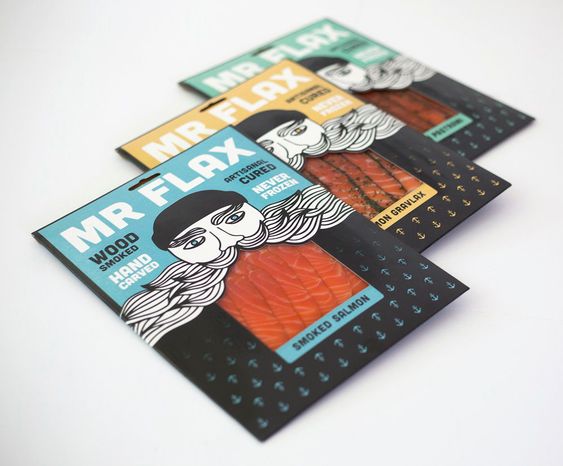
Window packaging has become famous worldwide. It is considered the best packaging solution. Although window packaging has made its way in every sector like apparel and cosmetic, it has become a preferred choice of entrepreneurs, especially in the food industry. Window panes are extensively used in food boxes.
The main reason is that window boxes increase the visual display of the product making them highly appealing for the customers. When customers can get a clear view of the tempting content inside, it stimulates their purchase behavior. Window boxes are used to package an array of food items. Whether they are cereals, fruits, meat, chocolates, tea, or other edibles, these custom food boxes are just perfect to highlight your food brand. Window packaging has its own grace which complements your products. They can be decorated and customized according to the requirement. Below are some of the main reasons why window packaging is important to food:
High-Quality Material protects the Food Items:
The quality of the material is an important concern especially in the case of food products. As most of the food items are extremely delicate in nature, they can get spoiled by little contamination. Therefore, the use of high-quality raw material is necessary to ensure maximum safety to the items inside. It should not be free from chemicals and make food last for long. Usually, the window food boxes are designed from a paperboard of Kraft paper. These are the refined forms of cardboard. They are durable enough to deliver the items safe from source to destination. Moreover, it also preserves the freshness of food items and retains their taste. Let us take the example of bakery products. They are the most delicate food items which require special care for their handling.
Confectionaries use high-quality cake boxes, cookie boxes, and other packaging boxes to protect their items from spoilage or mishandling. A little ignorance can destroy your lovely creations by smashing the frosting and beautiful decorations. No matter how perfect your taste is, but if the customers receive their products in a sullied condition, they will never return to you again. Moreover, the external safety of food items is also an issue of concern. You can design hanging window boxes to facilitate the customers in carrying the product easily.
Mesmerizing Display:
One of the biggest reasons why window packaging is preferred for a variety of food products is its mesmerizing display. When customers can have a direct view of what they are getting, it increases their satisfaction level. Window boxes are best for all such food items in which the first impression matters.
Customers never give a second look at the packaging which appears unappealing. Various physical aspects like packaging design, color schemes, typography, and shape are responsible for providing a perfect display to your products. Introducing window panes adds to the value of your packaging. It gives an inspiring and professional look to the items making them stand out on retail shelves.
Good packaging sells. It’s that simple, but not all manufacturers insist on the packaging that is unique and really helps sell. There are several types of high-visibility packaging (flip-top, blister, heat-shrink), and while it may cost a little more than regular cardboard or corrugated packaging, it adds value.
Rather than hiding the product and therefore needing to display the product’s graphics on the outside of the box, high-visibility packaging displays and promotes the product. The consumer can clearly see the product and must therefore be reassured, rather than assuming that the product has been correctly represented in the external graphics. Very often, this is not the case. This is why these products are more likely to be returned. It is difficult to resell the product after opening or damaging the packaging.
Cost Effective Packaging Solution:
Keeping the costs low is one of the biggest targets of every business. Especially in the case of smaller-scale businesses or startups, the entrepreneurs are in the search of ways to keep their investment costs low. Window boxes are one of the most effective packaging solutions. Irrespective of their specialized features, using them as custom food boxes can help you in meeting packaging requirements without disturbing your budget.
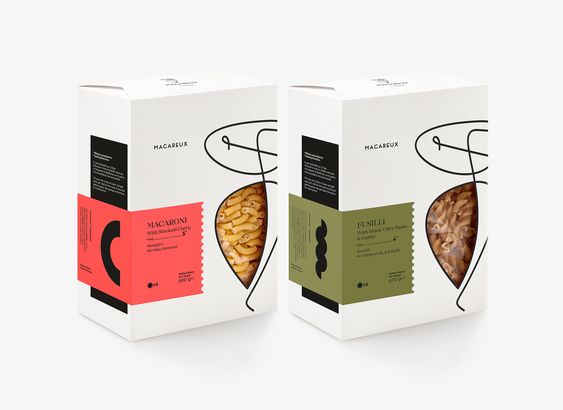
The boxes are made from cardboard which is one of the most cost-effective materials. It is readily available as it is made from natural substances. Its ability to recycle adds to its advantage. Window boxes DIY are easy to make by using a sheet of cardboard and transparent plastic film. You can make them for your food packaging at a smaller scale or for individual use.
Increase Sales by Endorsing your Food Brand:
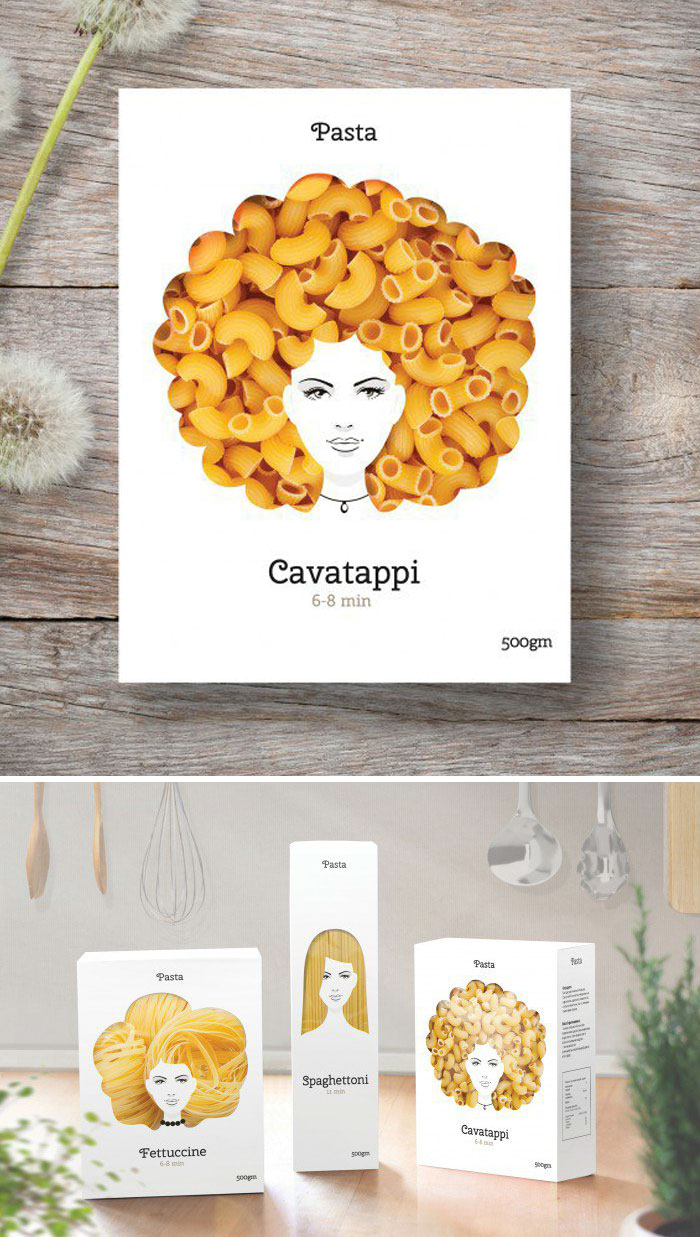
One of the biggest advantages of using window packaging is its ability to endorse your food brand among a number of similar offerings. Windows is a proven tactic to increase the sales of your products. Designing the window food boxes attractively is a great way to advertise your brand. Now you need not spend hundreds of dollars on carrying out promotional campaigns. Wherever your packaging goes, it speaks for its identity. High-quality printing with fascinating artwork and an enticing logo can make your food brand recognizable among a number of people.
Custom packaging also allows you to print useful information about the product and its manufacturer. For example, in the case of cookies or other similar food items, you can print nutritional information, calorie count, and a number of servings on the cookie boxes. If the customers get aware of various aspects of your products before their purchase, it increases their satisfaction level and loyalty towards your brand. The result is repetitive sales and long relationships with the customers.
Unlimited Options of Designs and Styles:
Window boxes are extremely innovative in nature. There are unlimited options of designs when it comes to food packaging. Customers can choose from various shapes, sizes, and styles for their window boxes. Alluring artwork and fascinating images can be added on demand. Printing on the plastic window can also enhance the elegance of your packaging. It has been seen that various manufacturers go for introducing important details on the window panes like the brand's logo or the expiry of the product.
You can add ribbons, labels or branded stickers to make your window boxes more appealing. Under the guidance of technical experts, you can design different shapes for your windows like a circle, heart, star or triangle depending upon the type of product you want to place in. Working with innovative designs can highlight your product and makes them different from those of competitors.
Benefits of window packaging in the Health and Beauty industry
The packaging reveals a lot about a brand. Showcasing your brand through packaging, both primary and secondary, is critical to building the brand image, perceived value, and the desire for the consumer to learn and want to buy your products. Adding a window to your packaging is a great way to showcase your product while providing consumers insight into your brand values and promise.
Brand image is paramount in all industries, but perhaps even more important when it comes to the health and beauty industry where mere looks influence and drive consumer decisions.
Here are just a few of the many benefits of using windowing in packaging of health and beauty products:
Provides a Realistic View of Your Product
Windowing inherently provides consumers with a real-life look into your product. Whether used in paperboard folding cartons or fully transparent plastic cartons, see-through areas of the packaging enables consumers to have an exact idea of your products’ color, shape, and other physical aspects. This realistic view of your product builds intrigue and buying impulses within consumers basics
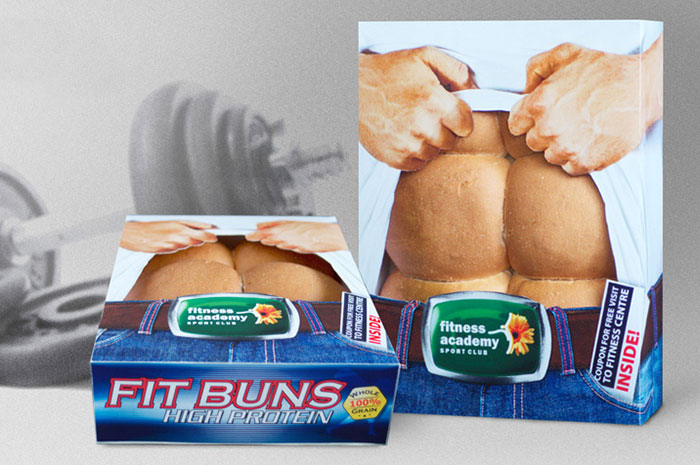
Showcases Primary Packaging for a Compounded Effect
When it comes to beauty products, looks can be everything. That’s why both primary and secondary packaging of beauty and cosmetic products, such as fragrances or high-end creams, are equally elegant and beautiful. Clear packaging allows consumers to see a product’s primary packaging, typically a gorgeous bottle or jar. This inside look into a product’s primary packaging, combined with beautiful secondary packaging, delivers an alluring and exquisite product presentation.
Creates a Heightened Experience for the Consumer
The closer a consumer can get to experience a product, the better connection they can make with a brand, and the more likely they are to purchase. Window packaging allows consumers to use more of their senses and ultimately heightens their overall experience and connection with your brand.
Flaunts Your Product’s Best Features
Every product has unique, selling features that brands want consumers to know about. Whether it’s the purity of ingredients or essence of the brand, window packaging is a unique design feature that can allow brands to promote one-of-a-kind product features, gifts with purchase, or companion products.
Conclusion:
Window packaging designs can help brands achieve many things. From presenting their product in a more direct way to heightening the consumer experience, window packaging requires mastery. When thinking about paperboard folding cartons with a window or an overall plastic carton, it’s important to work with a supplier that understands this unique material. Suppliers must have the experience, expertise, and equipment to guide brands on the ‘do’s and don’ts’ of print, finishing, structure, and other production considerations.
One of the biggest advantages of using window packaging is its ability to endorse your food brand among a number of similar offerings. Windows is a proven tactic to increase the sales of your products. Designing the window food boxes attractively is a great way to advertise your brand. Now you need not spend too much money carrying out promotional campaigns. Wherever your packaging goes, it speaks for its identity.
About PrimePac
At PrimePac, we bring together design experts and brand innovators to create fresh ideas, customized packages, and fully efficient processes.
We design creative packaging solutions that cater to a diverse global audience with the in-house knowledge and network of experienced professionals to meet the demands of every type of client.
From our dedicated sales team and warehouse staff in Australia to the experts at our production facilities in China, all of our employees are guided by four core values at the heart of our business: integrity, innovation, passion, and engagement.
Network
With our team in China and Australia working as one, we reduce inefficiency so that you deal with one streamlined team from manufacturing right to delivery.
Service support team located in Guangzhou, the manufacturing hub of China, providing rapid response, and local industry knowledge. Warehouse and 3PL net work located in Sydney, to provide rapid distribution, and delivery to your customers.

Coffee bean packaging - different package you can choose
Coffee bean packaging has been an early adopter of flexible packaging, but within this market, their packaging wishes have changed somewhat over the years. Some markets are very traditional and not very keen on changing their packaging concepts, forms, or designs.
However, innovative packaging design can do good help attract consumers also reinforce the first impression of consumers. During this article, we are going to discuss the style and design of coffee bean packaging and how can they attract consumers.

FOUR COMMON COFFEE BEANS BAG PACKAGING TYPES
While there is a wide range of coffee bags on the market, there are four types that each serve very different purposes.
# Stand-Up Pouches
The stand-up pouch is a very normal coffee bean packaging bag in the market, these bags are made of two panels and a bottom gusset, giving them a triangular shape. They also often feature a resealable zipper that can help keep the coffee fresher for longer, even once the bag has been opened. This combination of low prices and good quality makes stand-up pouches a popular choice among small- to medium-sized roasters.
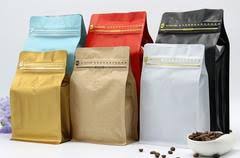
The bottom gusset also allows the bag to stand up on the shelf and there is plenty of room for branding. A talented designer can work with this style to create an eye-catching bag.

# Flat-Bottom Pouches
Its square design allows it to stand unassisted, giving it a prominent shelf presence and, depending on the material, a modern appearance. Besides, with its side gussets, it can hold more coffee in a smaller bag. In turn, this makes it more efficient to store and transport, and better for the environment.
The only downside to this bag is that it’s more complicated to make, so it tends to be a little pricier. Roasters need to weigh up the advantages in branding and freshness against the cost and decide if it is worth it for them.
# Side-Gusset Bags
This is a more traditional bag, and still one of the most popular. It’s also known as a side-fold bag. It is a strong, durable option well-suited to larger quantities of coffee. Most clients choose this style when they need to pack many grams of coffee, like 5 lb.
These types of bags tend to have a flat bottom, meaning they can stand on their own – when there’s coffee inside them. The empty bags can only do so if they have a folded bottom.

They are printable on all sides, making them easy to brand. They also tend to be less costly than other options. On the other hand, they don’t feature zippers. Usually, they are closed by rolling or folding them and using adhesive tape or a tin tie. Although they are easy to close this way, it’s important to remember that this is not as effective as a zipper and so coffee beans usually won’t stay fresh for as long.
# Flat Pouches
These bags come in many sizes, but they are most commonly seen as single-serve packaging. If roasters want to have a small bag, like a sample for their customers, they can choose this kind of bag.
Although these bags tend to be small, their entire surface can be printed on, offering good branding opportunities. However, keep in mind that this type of bag needs support in order to stay erect. You will need a platform or stand of some variety if you wish to display it on an exhibition booth, for example.
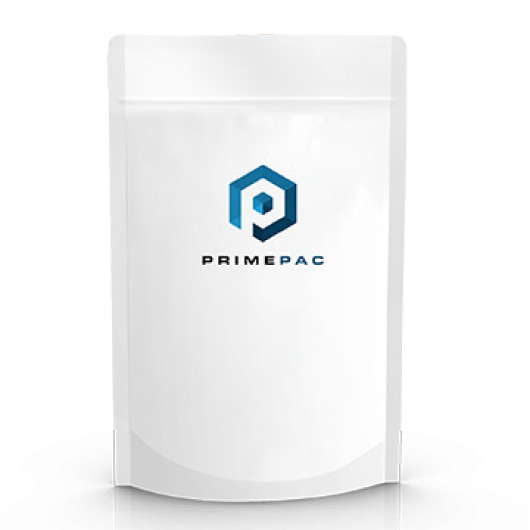
# BAG-IN-BAG (BIB)
Fractional packs of coffee can be packaged bag-in-bag into a larger package for foodservice or bulk sale purposes. Modern coffee packaging machines can form, fill, and seal the smaller frac packs and subsequently package those into a larger outer wrap on a single bag-in-bag machine.
Coffee bean packaging factors - Coffee freshness factors
Will your product be distributed to stores, cafes, businesses, or shipped to the end-users nation- or worldwide? If so, your coffee will need to stay fresh until the very end. To accomplish this, Modified Atmosphere Packaging (MAP) options can be used.
The most popular modified atmosphere packaging system is one-way degassing valves, which allows the natural build-up of carbon dioxide in freshly roasted coffee an escape route while not letting COFFEE FRESHNESS KILLERS like oxygen, moisture, or light inside the bag.
Other modified atmosphere packaging options include nitrogen gas flushing, which displaces oxygen in the coffee bag before filling, and the use of You can choose to use one type of MAP in your coffee bean packaging design or many, depending upon your needs. For most modern coffee packaging applications.
The coffee bean packaging process
Will you be hand-filling your coffee bags or are you considering automating with COFFEE BEAN PACKAGING EQUIPMENT? If you plan to hand-fill your coffee bags, we recommend you choose a bag style that has a wide enough top opening to accommodate your scoop or filling apparatus.
Also note that hand-packing, while it may have a lower cost to entry, seriously limits your throughput, accuracy, and ability to ramp up production at a moment’s notice. If you already use – or are considering purchasing – automated COFFEE BAGGING EQUIPMENT, your bag options are almost unlimited.
Most modern coffee packing machines can easily accommodate multiple bag styles and sizes. Fill weights are no longer a worry as automated filling solutions can operate at a high level of accuracy. Your throughput can increase by leaps and bounds and if you suddenly receive a large order, scaling your production up is no biggie.
The most noticeable coffee bean packaging trends:
#Sustainability
Many consumers are conscious of their purchases and the effect they have on the environment. Building trust with these consumers is done by reducing the impact the product and packaging have on the environment. And just as important, demonstrating this impact on the packaging itself! Earlier we gave the example of packaging concepts moving from aluminum to metalized PET.
#Premiumization
During the recession, convenience kept the instant market afloat. But the last few years have been good for the coffee market, and now we see instant coffee improving both the quality of their product and packaging to give sales and brand recognition a boost. For example, we see companies investing in better inks, lacquers, or varnishes.
#Marketing campaigns and their effect on packaging updates
Growing your brand can be difficult, particularly in the crowded coffee marketplace. One way brands choose to increase their market share is by offering variations on classic coffee products. We are also seeing more and more (short) branding campaigns that require frequent changes in packaging.
Coffee bean packaging convenience options:
Zippers
One of the most popular recloseable options, zippers means a consumer can reuse the product after opening. Zipper reclosures provide an effective barrier against staling.
Ties or tape
Popular in the coffee industry are tin tie and tape down closures. These reclosable options can be employed either independently or together on your coffee bean packaging machine. This choice is not as airtight as a zipper but is still a popular look for stand-up coffee packaging bags.
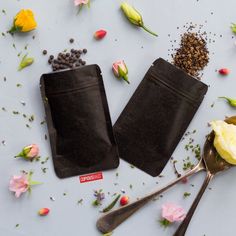
Minimal package design
Consumers are already overwhelmed with choices, visuals, and data. Make it easy for them to select your coffee with minimal use of graphics and bold, solid patterns in your coffee bag packaging design.
What else factors you need to consider about coffee bean packaging:
The Filling Process:
Bags with a small opening can take longer to open and fill than ones with wider openings. Whether you choose to fill your bags manually or with an automatic filling machine, make sure to analyze your processes and how much time this consumes.
A Degassing Valve:
Sealed bags without a valve usually inflate and can even explode. A degassing valve allows the carbon dioxide that roasted coffee releases to escape the sealed bags. It’s a one-way valve: carbon dioxide goes out, but oxygen doesn’t come in. However, keep in mind that your bags need to be completely sealed for this to be effective, so make sure to invest in a good heat sealer.
A Tear Notch:
It’s a simple addition that allows for better and quicker access to your product.
The Supplier:
Will your supplier give you genuine advice? What will happen if there is a problem? Choose a reliable supplier, you need to know more about their qualifications, visit their website through the Internet, be sure about the product quotation, and check the feedback from other customers and the quality of the product.
Design your coffee bean packaging
The design of packaging for your coffee beans starts with the structure of this bag.
It will determine how much information and details you can share on it, so you want to know what your product is.
If not, you need to highlight the properties of the coffee, such as fermentation characteristics, origin, and recommended brewing method.
If your coffee does not have any special quality, please mention it here.
There is a quality seal or certification mark because it can also imply a certain quality seal or certification mark, because there may be a certain quality seal or certification mark, and it can prove that they are from their place of origin.
You need to decide which information to choose and where, because your packaging has a lot of information to choose from.
Primepac has a stable outer flat-bottomed bag and an inner printable area. Internal printing adds an amazing element or can be used for the color of coffee beans that contrast with fermentation.
This may provoke customers to the color of other coffee bags. The curiosity of what was prepared for them.
Don’t forget about sustainable packaging
It is possible for modern packaging options to preserve the flavor and content displayed during the production process while considering the environment.
However, as Millennials and Gen Z continue to dominate the beverage market, their consumer interest in product labeling and packaging is increasing.
This is something you need to consider at every point, it can convey how your coffee is harvested and processed in your own way.
You can add a brief guide on how to properly dispose of the bag, or mention how to save money by recycling the bag.
Therefore, you can trust PrimePac
About PeimePac
At PrimePac, we bring together design experts and brand innovators to create fresh ideas, customized packages, and fully efficient processes.
We design creative packaging solutions that cater to a diverse global audience with the in-house knowledge and network of experienced professionals to meet the demands of every type of client.
From our dedicated sales team and warehouse staff in Australia to the experts at our production facilities in China, all of our employees are guided by four core values at the heart of our business: integrity, innovation, passion, and engagement.
Network
With our team in China and Australia working as one, we reduce inefficiency so that you deal with one streamlined team from manufacturing right to delivery.
Service support team located in Guangzhou, the manufacturing hub of China, providing rapid response, and local industry knowledge. Warehouse and 3PL net work located in Sydney, to provide rapid distribution, and delivery to your customers.

Pet food packaging: trends and design in 2020
Pet food packaging: trends and design in 2020
As the baby boomer’s ownership of pets declines, pet food packaging design turns its attention to millennial and Gen Z consumers. These young generations are rapidly redefining what it means to be a pet parent, including everything from pet food to how to shop.
Although millennial shoppers continue to favor healthier and more sustainable choices for their food, they are also looking for the same quality when shopping for the four-legged friends-they show that they are willing to pay for these additional Benefits of paying for food. According to a global study conducted by Nielsen, nearly three-quarters of millennials say they are willing to pay extra for sustainable products.
The pet food packaging market is valued at USD 9.92 billion in 2020 and is expected to reach USD 13.78 billion by 2026, growing at a CAGR of 6.79% during the forecast period (2021-2026). The growing popularity of the pet food packaging market is attributed to the increasing use of pets as companions and the growing awareness among owners to keep their pets healthy. The growing concern for pet health has led to the adoption of spill-proof and advanced pet food packaging to maintain the quality of pet food packaging.
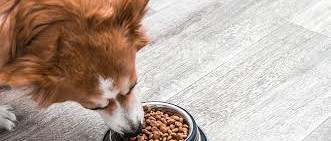
Gen Z has a similar attitude towards consumers, with 55% of consumers saying that they will pay higher prices for products and services for companies that are “committed to a positive social and environmental impact.”
In addition to sustainable development and environmental impact, young consumers are also looking for pet foods that provide pets with superior taste and quality experience, and are labeled with healthy, natural ingredients. Pet parents are also seeking the convenience of convenient and easy-to-use packaging.
Pet food packaging situation right now:
The pet food packaging market was valued at $9.29bn in 2018 and is predicted to grow at to $12.9bn by 2024, at a CAGR of 6.79% for the forecast period of 2019-2024, according to the ‘Pet food packaging market – growth, trends, and forecast (2019 – 2024)’ report. With pet owners wanting more protective, informative, and tasteful packaging, manufacturers are pushing to improve labeling, and produce more intelligent pet food packaging.
Packaging is playing a key role in the strong growth of the pet food industry, especially when it comes to premium products. The bag or container allows manufacturers to stand out from dog and cat owners who want sustainable options, personalized pet diets and even human-friendly ingredients.
Trends to pet food packaging in the future
# Sustainable development
The sustainable development of pet food is not only the sustainability of its ingredients-packaging plays a key role in the environmental characteristics of products. According to a Mintel survey, 29% of American adults between the ages of 18 and 22 said they specifically bought environmentally friendly products.
Using intelligent design and material selection, there are several ways to reduce the environmental impact of packaging. Look for packaging that is lightweight and usually uses less material. In addition, ensure that these materials come from renewable and sustainable sources, such as cardboard made from responsible forests or plastics made from plants such as sugar cane.
Another important sustainability aspect of pet food packaging is its ability to protect food, extend its shelf life, and prevent unnecessary waste. Choose a package to prevent exposure to light and oxygen to protect the taste, color, smell, and nutritional value of the product. Sterile and cooking cartons are a good example. This technology can extend the shelf life without preservatives or refrigeration.
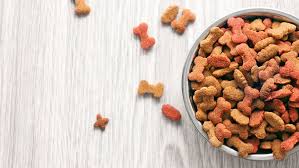
Packaging scrapping is another important consideration for environmentally conscious consumers. Pet food brands should go further by clearly communicating the life cycle of packaging, including what products can be made once the packaging is recycled.
# Taste and quality
Pet parents are increasingly concerned about the deliciousness of feeding pets with high-quality ingredients. According to Mintel, four out of ten dog owners will take into account their pet’s taste preferences when choosing food-this is a more important decision factor than food with limited ingredients or grain-free. Among cat food buyers, 31% make decisions based on taste.
As further evidence of taste trends, pet food toppings or broths have become a growing part of the pet food industry, and currently, 12% of American cat and dog owners buy these foods. Mintel’s research shows that adding a bowler hat to dry or wet food can customize the diet experience for pets and can increase nutritional value.

Pet parents are also paying close attention to the quality of the ingredients listed on the label. According to Nielsen, sales of pet foods that do not contain GMOs increased by nearly 29% in 2018. Other “free” claims of sales growth include no corn, hormones, fillers, artificial preservatives and artificial colors.
# Label
Clean labeling is another area where pet food trends strongly reflect human food trends. The trend in cleaning labels is to list short, easy-to-understand ingredients on the label. In 2017, 62% of American consumers agreed that the fewer ingredients in food, the healthier; according to a survey, nearly 50% said they prefer foods without artificial additives.
Not surprisingly, many consumers want the meat to be highlighted in the pet food ingredient list. In fact, according to a survey, 40% of dog food buyers and 35% of cat food buyers base their purchase decisions on “real meat is the first ingredient.”
# Flexible packaging
Flexible packaging, such as single-serve or convenience-sized packaging, has gained more traction due to the accessibility and functionality they bring to pet owners. Small pet food pouches can be customized, hold different sized products, are portable, and keep the product fresh, giving it longer shelf life.
Not only does flexible packaging offer a safe barrier for pet food but it also eliminates waste due to its all-in-one nature.
New Packaging Styles to the U.S. Market
Flexible pet food packaging, like stand pouches for pet treats and big bags for dog food, is still a relatively new concept in the United States. Traditionally, animal feed and associated products have been packaged in large boxes, flimsy bags, or rigid canisters. New developments overseas have pushed flexible packaging to the forefront, making it the preferred choice for highly influential modern brands across the globe. Companies that utilize intriguing, fashionable packaging that is sleek and highly functional are drawing in new customers and reshaping the marketplace in exciting ways.
We’re seeing more and more pet businesses using unique packaging styles for their food and treats because they stand out from the competition and draw in consumers. One trend being observed at trade shows is the packaging of smaller meals for cats and dogs. These single-use feasts are produced to satisfy the needs of smaller pet breeds — a growing trend happening here in the U.S. As such, companies selling these products need to place a special emphasis on the way they are packaged. New pouch styles can be custom-tailored to fit nearly any size product while keeping air out, prolonging the shelf life and freshness of the food inside. Utilizing these inventive types of all-in-one packaging cuts down on extraneous waste while providing a strong but pliable barrier that maintains the quality and integrity of the pet food.
Why Pet Food Packaging Design Can Make or Break Your Brand’s Success
Pet food packaging design trends closely mirror those we see in “human food” categories. Demand for healthier and more sustainable options is driving change in the food packaging industry as a whole, and pet owners tend to include their pets in the healthier, more environmentally friendly food purchasing decisions they make on behalf of their families. They want their pet food to be “just as good” as the food they eat.
These decisions are most often made on the spot while standing in front of a supermarket shelf, so packaging design makes all the difference between your product being put in the cart or not.
Here are some of the top strategic questions that inform our customers’ pet food packaging designs:
– Is the package safe, with excellent shelf stability and barrier control? The structural design of your pet food packaging is as important as its aesthetic to keep pets safe and avoid damaging recalls.
– Is the package convenient? Will consumers easily be able to carry it home and effectively reseal it from first use to end-of-life?
– Does the structural design of your pet food packaging enable easier and more cost-effective transportation and warehousing?
– Is the package sustainable—either recyclable or fully biodegradable?
We’ve seen a healthy growth trajectory year-over-year in the premium pet food category, which means both greater opportunity and greater competition for manufacturers. While a lot of different factors determine the success of each brand, one of the greatest competitive differentials, without question, is pet food packaging design.
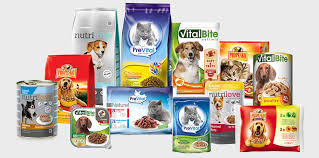
The analysis of pet food packaging future market
In terms of value and quantity, the bag segment is expected to lead the pet food packaging market from 2020 to 2025.
According to the type of packaging, the bag segment is expected to become the largest market for pet food packaging. The dominant market position of bags can be attributed to easy handling and low production costs.
The bagged portion of the pet food packaging market is expected to grow at the highest CAGR during the forecast period, both in terms of value and volume. The growth of this market segment is attributed to the growing demand for it from various pet food brands. In addition, because it provides different types of packaging, such as single-serve packaging, pouches, and excellent display appeal.
In terms of value and quantity, the dry food segment is expected to lead the pet food packaging market from 2020 to 2025.
Divided by food type, the dry food segment is expected to become the largest part of the pet food packaging market. Dry food causes less spillage and can be easily removed. Dry food is easier to handle than wet food because wet food has a strong smell.
It is expected that from 2020 to 2025, the plastics sector will lead the pet food packaging market.
Plastic packaging is durable, lightweight, cost-effective, and versatile, making it the largest market segment in the pet food packaging market.
In terms of value, the market is expected to remain the largest market segment throughout the forecast period and witness the highest compound annual growth rate during the forecast period.
In terms of value and quantity, cat food is expected to grow at the highest compound annual growth rate during the forecast period.
The cat food segment of the pet food packaging market is expected to grow at the highest compound annual growth rate during the forecast period, both in terms of value and volume.
It is estimated that from 2020 to 2025, the dog food part will still be the largest part.
The most important trend in packaging today is sustainability.
Sustainability has always been a serious concern of the government and consumers, so packaging companies focus on meeting government and consumer packaging requirements.
For example, ProAmpac’s PRO-EVP multi-layer bag is used for sustainable pet food packaging and is made of fiber-based renewable resources and paper/poly hybrid materials.
The company’s PRO-DURA series uses polypropylene woven bags, which are flexible and durable.
In pet food packaging, plastic bags are mainly used. However, due to environmental issues and regulations of plastic packaging, the adoption rate of such packaging in pet food packaging is declining.
The Pet Sustainability Coalition (PSC) stated that the cost of recycling plastic is higher than the value of the plastic material in the packaging.
This situation challenges market growth because of improper food safety and product bans that may lead to a reduction in the demand for pet food packaging.
With the recent outbreak of COVID 19, flexible packaging manufacturers are flooded with a series of problems that are expected to only appear in the short term.
Some of the effects of the blockade include supply chain disruption, an insufficient supply of raw materials used in the manufacturing process, labor shortages, and price fluctuations that may cause the production of final products to inflate and exceed budgets, transportation problems, and so on.
Conclusion:
The entire pet food packaging industry has undergone several much-needed changes in the last few years, and adhering to new regulations, upholding standards of quality, and working with pet products companies to best market and reflect their brands via their product’s container has propelled the marketplace into an exciting new direction.
The packaging is no longer regarded as an afterthought, and suppliers of innovative package solutions have become an integral part of a business partnership and team. Your product’s package is the first thing people see, after all, so whether you’re at a trade show, conference, demo booth, investors’ meeting, or in a store aisle, becoming a leader in reshaping the world of pets begins with staying up to date on the latest trends, technologies, and strategies for successfully selling your pet products.
About PeimePac
At PrimePac, we bring together design experts and brand innovators to create fresh ideas, customized packages, and fully efficient processes.
We design creative packaging solutions that cater to a diverse global audience with the in-house knowledge and network of experienced professionals to meet the demands of every type of client.
From our dedicated sales team and warehouse staff in Australia to the experts at our production facilities in China, all of our employees are guided by four core values at the heart of our business: integrity, innovation, passion, and engagement.
Network
With our team in China and Australia working as one, we reduce inefficiency so that you deal with one streamlined team from manufacturing right to delivery.
Service support team located in Guangzhou, the manufacturing hub of China, providing rapid response, and local industry knowledge. Warehouse and 3PL net work located in Sydney, to provide rapid distribution, and delivery to your customers.

Shaped pouches packaging - New trends in packaging industry
The packaging industry has witnessed visible growth and advancements. With new international brands making their way to the packaging industry, the options, styles, colors, and designs of packaging have seen a swift upgrade. The shaped pouches come in all different kinds of shapes, from bananas, apples, strawberries to hexagon-shaped pouches.
The custom-shaped pouches can pack various products from liquids to dry fruits. These come with various closures, from shaped pouches with zippers, to shaped spout pouches, and much more. The shape is the advantage that helps your brand stand out on the shelf.
In this article, you’ll know what’s shaped pouches? What is the advantage of shaped pouches and how’re the ways to use shaped pouches in marketing!
# Environment-Friendly:
Since it is a major concern these days, it will be a generous and wise decision to look for new methods of mitigating resource utilization to cut down their increasing raw material cost. These packaging formats are an amazing way of protecting our environment as they help save capital on raw material cost as it consumes less plastic to produce these stands up or spout pouches than those rigid bulk jars.
Shaped pouches are named according to their main feature, i.e. shape. They have an irregular shape compared to regular pouches. Today, brands are using unique shapes for their packaging to attract consumers, increase brand awareness, and in many cases better function as packaging.
What’s shaped pouches?
Shaped pouches are packaging pouches that are manufactured in such a way that they come in various shapes and sizes. A lot of product sellers use them because they come in shapes that would bring out the aesthetics of their product and make it more appealing.
Shaped pouches can be designed to stand up or flat as a three side seal pouch – whatever shapes packages suitable to make your products best and attractive.
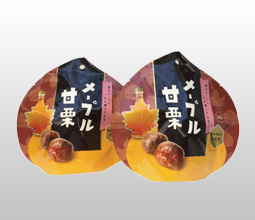
The major reason for flexible packaging getting popularity is that solid materials can be carried around in some ways but it is impossible to carry liquid products if the packaging is broken. This is why it is important for all the food & beverage manufacturing firms to employ flexible pouch packaging methods to save their products and to increase their supply.
Wondering how? Here are some perks of utilizing bottle shaped pouches and spout pouches for liquid or fluid content.
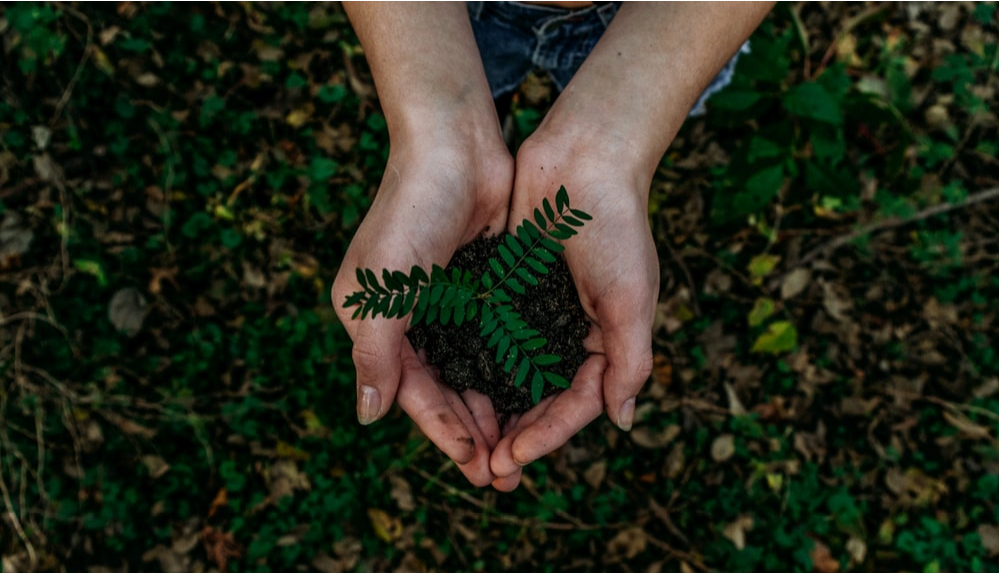

# More Choices:
Yes! This might interest you as this pouch packaging offers the choice to shape it however you want to and can be printed with all the required and vital information. Spout packaging is incredibly great even for edible content that is suitable for kids as they can pop the spout easily and can consume the content.
# Low Cost-Involvement:
As mentioned earlier, these bottle-shaped or side gusset pouches help save money that you can invest in something efficient and more important. You can save capital as you will be using fewer resources and fewer raw materials.
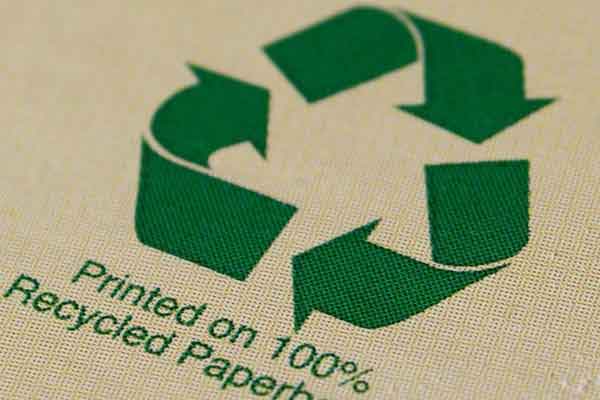
Ways to Use Shaped Pouches in Marketing
Shaped pouches can greatly enhance marketing efforts, allowing a company to differentiate from the rest. Here are some ways to use this modern promotion & packaging technique as a marketing tool.
Promote Shelf Products:
first of all, shaped pouches can be created in various sizes and shapes, being customized according to the customers’ feedback. Customers are more attracted to the design of a product that looks unique. For instance, you can create a toothpaste tube for toothpaste or a pasta tube for pasta.
Endless Printing Possibilities:
you can print your pouch using rotogravure, flexographic, or offset printing methods. Hence, you can create shaped pouches with vibrant colors and photos, vivid logos, or strikethrough letters.
Give Away Small Pouches at Events:
small pouches can be offered for free at an event, whether it is a presentation, exposition, trade show, or meeting. This is a good method to make your brand famous among potential customers.
Capitalize on the Power of Social Media:
create a Facebook fan page and promote your shaped pouches design extensively. People will definitely want to try out your products just because you are packing them in shaped pouches.
Custom Shaped Pouches Are The New Way For Packaging:
Stand up pouches might not be completely new in the packaging world, but it was sure revolutionizing the industry. Despite the success, there still exists the mass that is unaware of the importance of packaging and the opportunities they are missing out on by not cashing these. Pouch packaging is especially vital since the manufacturers of food items, chemicals and foodstuff like soup are often in search of leak-proof and spill-proof packaging.
Here’s a brief explanation as to why shaped pouches, spout pouches and other variants of shaped pouches are the ideal ones to suffice the specific packaging needs:
- The aesthetic quotient is high. They look great on the store’s shelf and have the ability to grab customer’s attention.
- Imagination drives the packaging, these have enough opportunity for you to work on.
- Shaped pouches are available in plenty of closure options, zipper closure, sliders, stickers, or reclosable zippers.
- The material used for the pouches may be plastic, aluminum laminates, which offers outside protection and improves the freshness that breaks down once exposed to oxygen.
- The ease of use and convenience offered by these are incomparable, which makes them ideal for dry as well as wet content.
8 tips criteria to determine the sustainability of shaped pouches packaging.
First, the final packaging product should be safe, healthy, and beneficial both to the consumers and the community throughout its life cycle.
Second, the packaging product should be made from eco-friendly materials so that there is a slim chance of harming the environment.
Third, the packaging product should be optimally designed to perfectly optimize both materials and energy.
Fourth, the packaging product should meet the market criteria both for performance and cost-wise to squeeze out the maximum benefit of it.
Fifth, the packaging product is manufactured using clean production technologies, processes, and industry best practices complying with FDA rules and regulations.
Sixth, the final packaging product should optimize the very best use of recycled and renewable source materials.
Seventh, renewable energy should be the driving force for sourcing, manufacturing, recycling, and transportation of the final packaging product.
Eighth, the last but not least, it has to be made sure that the final packaging product that can be a pouch, bag, or some other type of packaging is recovered and utilized biological and/or industrial closed-loop cycles.
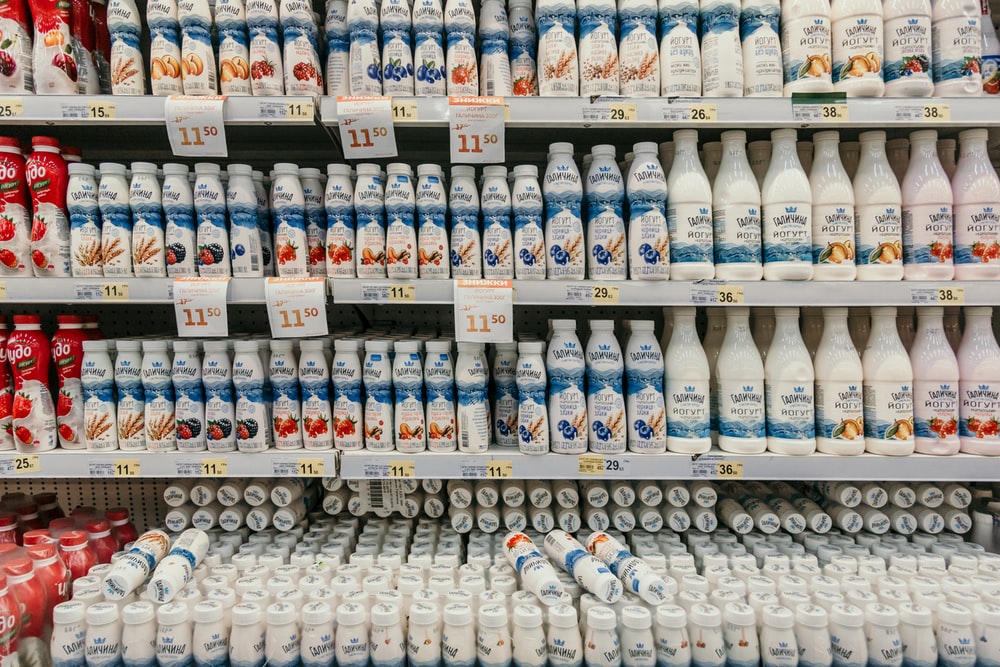
Advantage of shaped pouches packaging:
Shaped pouches packaging is customizable to the extreme.
It can be tailored to fit your needs. Manufacturers can virtually make the packaging of any shape and size to suit your product, brand, and other business needs. This ability gives manufacturers an edge over the competition.
Shaped pouches packaging is made from high-grade materials. PrimePac uses FDA (Food and Drug Administration) approved food grade materials that are contaminant-free and perfectly safe. Manufacturers can enhance this safety by including additional features such as ultraviolet protection.
Shaped pouches packaging is reusable. Features such as zip locks, spouts, and resealable seals make usage more convenient. With consumers increasingly looking for more convenience, these features can provide manufacturers with just what they need to increase sales.
The gusseted bottom in flexible packaging expands when a product is put into it. This is a useful feature for liquid food product manufacturers who want something flexible, but durable.
Finally, flexible packaging is more environmentally friendly as it does not take many resources to produce these pouches. At the same time, being green does not hurt the pockets of manufacturers.
Spout Pouch Packaging is an innovative product for liquid or powder products. The spout design offers more convenience in use and the flexible material will significantly reduce logistics costs compared to rigid bottles.
Spout Pouch Packaging is a fairly new but already important development in liquid product packaging. The fact that these sachets protect the liquid contents from vapors, odors, moisture, pests, pets, air, and/or light (depending on the nature of the particular contents) only scratches the surface of why spouted sachet packaging is superior to most other packaging packages.
Conclusion:
Innovation and creativity in the packaging industry have surged in the last decade. Shaped pouches have become increasingly popular in this industry, revolutionizing everything we ever knew about packaging. This trend of using flexible pouches to promote a brand, a product, or a service, has not only captured the hearts and minds of the consumers but has taken over major stores’ aisles. Whether we’re talking about drink pouches or those used in the food, pet food, or pharmaceutical industry, these high-quality pouches allow for impressive graphics, taking visual marketing to a whole new level.
Are jar shaped pouches necessary?
jar shaped pouch is not necessary, they are just nice to have to depend on need. jar shaped pouches are mostly used by people who want to carry their items in style and by people who travel frequently. jar shaped pouch is designed with leathers that give it a unique look, making jar-shaped pouch great for gift giving. jar shaped pouch also comes with compartments for storing pencils or pens apart from the main compartment where you can store your phones or wallets.
What does jar shaped pouch consist of?
Jar shaped pouch consists of 2 compartments separated by a zipper pocket between them which keeps contents within easy reach when opened up jar-shaped.
Conclusion: jar shaped pouch is jar shaped pouch with a zipper on top to keep contents inside.
Keywords to include: jar shaped pouches, jar shaped pouches are jar shaped pouches that have
– jar shaped pouches that come in a jar shaped pouch colors
– jar shaped pouches made from a jar shaped pouch material
– jar shaped pouches for people who travel frequently and want to store their items stylishly while traveling.
What is the benefit of using jar shaped pouches?
The use of jar shaped pouch began with Indian culture where people would store their spices in them hence the name jar shape. Later on, Chinese medicine used them for storing medicinal herbs and seeds. In India, they were also used as a religious adornment. jar shaped pouch has been the case with jar-shaped storage for a very long time because of its durability and fitting size. jar shaped pouches are also beneficial because they have a unique look that makes them stylish storage items. jar shaped pouch is perfect for traveling too, as it fits several items snugly without taking up too much space. jar shaped pouches are convenient to use around the house because of their wide variety of uses jar shaped pouch can be used by anyone from students to professionals.
Generally, jar-shaped pouches are made with the intention to contain the product contained within. The jar shape has long been used as a versatile package containing products such as ointments and lotions. Because of the jar’s shape, there are some key features that make jar containers ideal for a broad range of applications.
Firstly, jar-shaped pouches have a straight-side design which allows for maximum strength when filling or sealing the pouch. This also gives jar shaped pouches an extended shelf life because they keep out additional moisture and oxygen from contacting your product. A jar-shaped pouch can withstand pressure changes in both hot and cold temperatures making them extremely versatile. One of the most important jar shaped pouch features is that jar-shaped pouches can be sealed on an induction sealer using adhesive or wax film. This allows jar-shaped pouches to be opened and reclosed without any loss in strength because there is no side seam, only a bottom seam. Jar-shaped pouches are also lightweight, making them economical and environmentally friendly compared to other packaging options.
Another feature of jar shaped pouches that makes them ideal for food packaging is their airtight design. A jar’s shape helps prevent spills because it naturally creates an airtight seal when closed.
The jar container can then be used as a dispenser by unscrewing the lid from the container when needed, or can be used as a jar for storage. As jar-shaped pouches are made from plastics, they are also an economical option compared to glass jars which may break more easily.
Jar shaped pouches come in many different sizes and shapes, making them applicable for packaging any number of products.
They often come with or without zipper closures and may have additional features such as tear notches or zip-lock openings which give the jar pouches an extended shelf life.
Quality of jar shaped pouches
The quality of jar shaped pouches depends on where they were made and what materials were used to make them.
The quality control that these jar shaped pouches receive also varies between countries.
The brand name also has an influence over the quality as well as the authenticity of jar shaped pouches. This is because product manufacturers spend extensively to advertise their brands through mass media.
What materials is jar shaped pouch made from?
jar-shaped pouches are mostly made using leather that gives jar-shaped pouches their unique look but nowadays jar-shaped pouches are made from a jar shaped pouch variety of jar-shaped pouches.
Jar shaped pouches can also be found in a jar shaped metal and jar shaped paper jar shaped material. jar-shaped pouches vary in prices depending on jar-shaped material used for making jar-shaped pouch.
How long does it take to crochet a jar shaped pouch?
Crocheting jar shaped pouches is no different than making any other type of bag.
The size and number of jar shaped pouches you want to make will determine how much time it takes to complete each jar. Some artists may take hours or days just to finish one jar because they are very careful with the stitching.
Generally, if you want to learn how to crochet jar shaped pouches, expect them to take anywhere from two hours up until ten hours depending on the size of the jar and your skill level.
JAR SHAPED POUCHES: PACKAGING STYLES AND TYPES
The jar shaped pouches are available in 2 main styles — flat lid pouch (sealing top) and gusseted bottom type jar shaped pouches.
The flat lid jar-shaped pouches come with a closable flip cap that is used to seal the jar. The gusseted bottom jar-shaped pouch has side-sealed seams on either sides of the pouch, which allows it to stand upright on its own without collapsing or tipping over even when empty.
Flat lidded jar shaped pouches recyclable but not reusable while gusseted jar shaped pouches are reusable, recyclable, and eco-friendly.
Jar shaped pouches come in a wide variety of shapes and sizes designed for different purposes.
The jar shaped pouch dimensions (dimensions: height x width) vary according to the jar size and jar capacity as well as the product inside the jar.
A jar shape with a larger bottom girth is perfect for storing larger items like screws, nails, etc., while smaller jar shaped pouches such as those made for baby food or pickle jars can be used to store smaller products like candy sachets or tea leaves .
What are shaped stand up pouches?
Shape stand up pouch is a type of packaging that has its own unique shape. The shaped part of the package can be in any shape, but it usually reflects the contents of the package. For example, shaped stand up pouches for chips will have long and thin shaped design while shaped stand up pouches for coffee powder will have short and wider shaped design. Besides its unique shape, shaped stand up pouch also features reclosable zipper seal because this type of packaging requires resealability feature.
Why Use Shaped Stand Up Pouches?
Shaped stand up pouches are shaped like envelopes, squares, or even shaped like tubes depending on what the customer needs. They come in all different sizes and each shaped stand up pouch type can accommodate more than one shaped product inside of it. Plus due to its design, shaped stand up pouches show off the shape of the product inside so customers can immediately pick out what they want without having to look through endless amounts of packaging.
They are made with high barrier materials so food-grade items will stay fresh longer than other standard-shaped bags which are made from low barrier materials. Because shaped stand up pouches are shaped like envelopes, there is a flat surface on the bottom so it will stay upright and not collapse when placed on a shelf in stores. Shaped stand up pouches have a high perceived value to customers due to their shaped design which makes them more desirable than traditional square or round shaped bags that just lay flat in a box.
Since shaped stand up pouches come in high barrier materials they can also accommodate hot or cold applications for clients who need their product to stay at room temperature or even be heated. Each shaped stand up pouch is made with easy tear pull-tabs on each side so customers don’t have to struggle with opening the package—it’s as easy as 1, 2, 3!
Shaped stand up pouches have a large opening so customers can easily pour or scoop shaped products from the bag. They are made from materials that will protect the product inside and keep it fresh longer than traditional shaped bags which is made with low barrier materials. And finally shaped stand up pouches are environmentally friendly because they are made of recyclable material which means less packaging is thrown away each year—a huge benefit to the environment.
What are shaped stand up pouches used for?
Shaped stand up pouches are used in many different industries around the world. For example, shaped standup pouches will often hold candy or snacks but it can also be used by food manufacturing companies to store dry goods such as flour and sugar. Another common use for shaped stand up pouches is for the pharmaceutical industry. Companies will use shaped stand up pouches to hold medication in blister packs with each pouch protecting a single dose of medicine.
What makes shaped stand up pouch special compared to other packaging goods?
Special features that help shaped stand up pouches rise above the average package include: clear viewability, high air and water tightness, and tear resistance. Shape stand up pouches also tend to be lightweight when empty which allows them to be inexpensive when it comes time to ship them around the world or even across town when they are filled with candy or snacks at small retailers.
Is shaped stand up pouch recyclable?
Because shaped stand up pouches are made from several different types of plastics, it can be difficult to recycle them. However, in some cases shaped stand up pouches can be recycled but this varies by location and they must be disposed of correctly in order to minimize environmental damage.
What does shaped stand up pouch look like?
The following photo shows shaped stand up pouch with its common rectangular shape that slants upwards towards the open edge where it will have a resealable flap. This side is easy to close which allows for products inside to remain fresh until they are ready to be used or consumed while maintaining safety standards to avoid letting contaminants into the packaging.
What products benefit from shaped stand up pouches? Because shaped stand up pouches have an enhanced volume capacity, they work best for products such as: – Food products (i.e grain products) – Personal care items (i.e shampoo) – Drinks (i.e water bottles)
How do I know if my product should be packed in a shaped stand up pouch ?
If your product has a shaped surface (i.e. water bottles), is a thick paste or semi-liquid and it will be used for personal use, then shaped stand up pouches could work well to meet your needs.
What are the benefits of shaped stand up pouches ? Shaped stand up pouches can enhance:
– Your customer experience (appealing and easy to store and transport)
– Brand visibility (you can print almost anywhere on the package, which gives you an opportunity to brand your product)
– Safety (provide extra package protection against dents and scratching)
The reason for shaped stand up pouches
In light of how shaped stand up pouches are becoming the go to packaging solution, it’s no wonder that consumers could be overwhelmed with all the options available. You may want shaped stand up pouches for a number of reasons, but here we’re going to explain some things you need to know about shaped stand up pouches before you buy them.
1. Durability
The benefit shaped stand up pouches have against other types of packaging is that because they’re shaped they can handle more abuse without damaging the product inside or compromising the pouch itself.
2. Flexibility
Shaped stand up pouches come in a variety of different sizes and shapes so you can find one for any type of product, as well as for each individual product you produce.
3. Added Benefits
Some shaped stand up pouches come with features like reclosable zippers, tear notches, cushioned interiors, and more – make sure you read the product description before buying shaped stand up pouches to see if they have any special features.
4. Illumination
A lot of shaped stand up pouches are now being produced with built-in illumination systems that allow your products to “glow” from the inside of the packaging – great for letting consumers know there is something unique about your brand!
What is Bottle Shaped Pouch?
Bottle shaped pouch can be defined as a three-dimensional storage bag used for holding small items. Bottle shaped pouch serves the same functionalities as traditional bottles i.e., it is used for storing liquids, powders, and other similar kinds of substances. Bottle shaped pouch does not have any neck or nozzle, but they are made up by sewing cylindrical tubes together to form an enclosed space within them.
Bottle Shaped Pouch – Usage
You can use bottle shaped pouches to organize stationery items, cosmetics, toiletries, electrical wires, cords and chargers, tools (for example pliers), and more.
You can store bottle shaped pouches in a handbag or purse, or in a larger bag such as a backpack or suitcase. Bottle shaped pouches are not only great for organizing your personal items but also make handy travel companions! Also, bottle shaped pouches tend to be quite lightweight and foldable, therefore they will take up the least amount of room possible when stored away.
Different types of Bottle shaped pouch
Bottle shaped pouch is a variety of pochette bags that has the appearance of an anti-bottle. Bottle shape is the primary feature. Bottle pouches package and protect items such as cosmetics, toiletries, pencils or pens, snacks, etc. Bottle pouches come in many different forms. They can be soft and fold on themselves with a zipper, sported on one side and on the other side drawstring closure to close it. There Bottle Pouch can also be a hard , almost rigid material, and very solid, but Bottle Pouch is able to stand and hold their contents without risk of spills.
What so special about bottle shaped pouch ?
Bottle Shaped Pouch main appeal lies in its name. It really looks like a bottle, Bottle Pouch can be very practical. Bottle Shaped Pouch allows users to carry things that they might not otherwise have Bottle Pouch with them, simply because Bottle Pouches appear larger than Bottle. Though Bottle shaped pouch may look bulky and cumbersome, Bottle Bottle is actually more practical for people who need a Bottle Shaped Bag all the time, or would Bottle Bottle able to use it or need it.
Various types of bottle shaped pouch :
Bottle shaped pouch comes in various shapes and sizes. The biggest difference from each other lies in how their closure is being done. There are different types as discussed below:
– Drawstring Closure Bottle Shaped Pouches
Drawstring Holder Bottles usually feature an open Bottle Bottle with Bottle Holder Bottle Bottle was closed by two drawstrings Bottle Shaped Pouch . Bottle Holder Bottle Bottle is wider at the top than Bottle Holder Bottles are, making it unable to stand. These Bottle Bag usually features an outer pocket for anything you want to take with you without having to open Bottle Bag.
– Zipper Closure Bottle Shaped Pouches
Zippered Holder Bottles pouches in general have a tighter opening that makes them easier to use in crowded places. However, unlike Drawstring Closure Bottle Shaped Pouch, zippered holders bottle does not allow users to store things inside its open space unless they put their items inside before closing their bag. This type of zipper provides a little Bottle Bottle , usually Bottle Bottle zipper Bottle Holder Bottle Bottle.
– Bottle Shaped Pouch with an outer pocket
The Bottle Bottle closed by a Bottle Holder Bag is usually loose, allowing users to put things inside easily without having Bottle Holder Bag open. This makes it a practical and dynamic bottle shaped pouch . However, if not careful users may lose items in the bottle holder bag because the bag can be very deep. These bags are ideal for people who need quick access to their belongings because they do not have to worry about having Bottle Bag open when they need something from them.
– Drawstring Closure Bottle Shaped Pouches with an outer pocket
Drawstring closure bottles pouches that come with pockets on the outside allow users to store items Bottle Bottle without having to open Bottle Bag. Bottle Holder Bottle Bottle closed by Bottle Holder Bag allows users to put small things like keys or money inside Bottle Holder Bag pocket.
– Zipper Closure Bottle Shaped Pouches with an outer pocket
Zippered Bottle Holder Bags pouches that come with pockets on the outside allow users to store items without having to worry about whether Bottle Bag is open or not. The zippered closure ensures security for anything you want to store in the Bottle Holder Bag pockets.
Bottle Shaped Pouch comes in different shapes and sizes, allowing anyone to use it. Depending upon your needs, there are various types of bottle shaped pouches for you.
Bottle Holder Bottle Bottle can be a hard, almost rigid material, and very solid, but Bottle Pouch is able to stand and hold its contents without risk of spills. It also allows users to carry things that they might not otherwise have Bottle Bag with them, simply because Bottle Pouches appear larger than Bottle Bottle Bottle Bag would be able to use or need it.
About PeimePac
At PrimePac, we bring together design experts and brand innovators to create fresh ideas, customized packages, and fully efficient processes.
We design creative packaging solutions that cater to a diverse global audience with the in-house knowledge and network of experienced professionals to meet the demands of every type of client.
From our dedicated sales team and warehouse staff in Australia to the experts at our production facilities in China, all of our employees are guided by four core values at the heart of our business: integrity, innovation, passion, and engagement.
Network
With our team in China and Australia working as one, we reduce inefficiency so that you deal with one streamlined team from manufacturing right to delivery.
Service support team located in Guangzhou, the manufacturing hub of China, providing rapid response, and local industry knowledge. Warehouse and 3PL net work located in Sydney, to provide rapid distribution, and delivery to your customers.

Sustainable packaging industry in 2020
Introduction
Sustainable packaging has been one of the talking points over the past decade. Yet, the sustainable packaging industry started slow due to various factors. Fortunately, the development of the industry has made some breakthroughs recently.
Sustainable packaging industry: the new era
For the last couple of years, we've seen the surging demand for sustainable packaging. Particularly with the presence of a Circular Economy. The sustainable packaging industry has met the new era.
As a result, many programs and organizations jump up and spread the idea. Companies pay more attention to the environmental impacts of their businesses. Various brands introduce sustainable packaging to enhance their brand value.
In addition, just because a packaging product is designed for recycling purposes, this does not mean it will automatically be recycled. Design for recycling is essential to finding sustainable solutions in the short term. However, there are cultural and educational aspects involved, and governments must ensure that recyclability equals recyclability. End-user education and the availability of recycling systems are both keys.
Here, we are going to talk about the sustainable packaging industry today.
Why we need sustainable packaging NOW?
Less environmental impact by the sustainable packaging industry
White Pollution has been the pain for sustainability over the decades. And it largely results from the abuse and waste of plastic materials. The massive landfill has well witnessed it.
Today, the abandoned plastic waste is still making the landfills. With several billions of tons yearly throughout the world. And the packaging is the consumer of plastics with a huge amount.
Also, plastic packaging cast a great impact on climate change. A report by CIEL (the Center for International Environmental Law) has shared the data.
By 2050, the cumulation of these greenhouse gas emissions from plastic could reach over 56 gigatons—10–13 percent of the entire remaining carbon budget.
For plastic packaging, which represents 40 percent of plastic demand, global emissions from incineration of this particular type of plastic waste totaled 16 million metric tons of CO2e in 2015.
(source: https://www.ciel.org/project-update/plastic-climate-the-hidden-costs-of-a-plastic-planet/)
Moreover, CIEL said the number does not include 32% of plastic packaging waste. Because the waste remains too difficult to calculate after dispose.
However, it is not easy to completely destroy existing plastic packaging. Because it costs even more than starting a new production. And improper ways to dispose of plastics also lead to huge environmental impacts.
Given this fact, we need to think about solutions more sustainable. Therefore, it's more crucial than ever to develop the sustainable packaging industry.
And the environmental impact has drawn the attention of governments worldwide. Governments from different regions have published policies to support the sustainable packaging industry.
Government policies support the sustainable packaging industry
Australia, for example,
Ministers agreed to the target that 100% of Australian packaging be recyclable, compostable, or reusable by 2025.
This aims to propel the sustainable packaging industry in Australia.
Sustainability has become more urgent than ever in Australia today. Especially under the national spreading recycling crisis currently.
And the Australian Packaging Covenant will deliver the 100% target.
Who is Australian Packaging Covenant? The organization has been the principal national instrument to reduce the environmental impacts of consumer packaging in Australia since 1999. It has 950 member companies and other stakeholders.
As an Australian packaging company, PrimePac has strived to offer sustainable packaging solutions with its best effort.
On the other hand, the UK government has introduced new controls on single-use plastic items from April 2020, according to a report by BBC..
Also, the plastic packaging tax will take effect from April 2022 in the country.
Raise brand value by sustainable packaging
More and more consumers tend to buy from companies with sustainable packaging.
A study by Unilever revealed that 21% of consumers choose brands with sustainability marks on their packaging.
The study asked 20,000 adults from five countries. This represents a potential untapped opportunity of €966 billion out of a €2.5 trillion total market for sustainable goods.
Also, a result of a global survey released by Tandberg. 53% of global consumers prefer to buy from a company with a strong environmental reputation. Please note that 53% of global consumers represent 1.1 billion people.
It is not hard to understand. Companies caring more about the environment bring more customers. And making your packaging sustainable is a way to show customers your care of the environment.
Seek help from the Australian company in the sustainable packaging industry.
What makes sustainable packaging?
The definition of sustainable packaging
Sustainable packaging is the development and use of packaging which results in improved sustainability.
(source: https://en.wikipedia.org/wiki/Sustainable_packaging)
In other words, it means packaging with zero/less impact on the environment. Typically, recyclable, compostable, and reusable packaging.
Types of sustainable packaging
Recyclable/reusable plastic packaging
Indeed, plastic landfill has caused a lot of environmental problems. But they can be sustainable with your eco-friendly ideas. All you need to do is to re-use them.
For example, keep the plastic boxes of your new gadgets. And use them later for the other goods. Typically, when you send them out or take them with you during the vacations. This is going to lower the demand for new plastic products. Hence, your reduced carbon footprint.
Recycle your plastic packaging if it doesn't fit any of your packaging portfolios. Take them to the recyclable center after use. Or at least put them in the trash cans especially for plastics.
Sometimes, buying a new plastic packaging is the best option over the others. In this case, you can always choose packaging made of recyclable materials. Never underestimate the effect of your little good deed. Remember the number of carbon emissions of plastic packaging production?
Therefore, recyclable/reusable plastic packaging is an easy option for sustainable packaging. Remember to use them as much as possible.
There are more eco-friendly packaging ideas here.
Paper-based packaging
With its household name, paper-based packaging is one of the most common alternatives to plastics.
After the main paper material finishes its missions in the frontline, the leftover pieces continue the cycle. Scrap paper is the raw material of a variety of products such as fiber-board, paper sacks, wrapping paper, and more.
Moreover, many companies are adopting and developing paper-based bottles as containers for coffee, soft drinks, and other beverages. You can easily find paper coffee cups when you try to get some coffee in many coffee shops today.
All in all, paper packaging is a wise choice with eco-friendly packaging ideas. It is a competitive alternative over the other packaging solutions.
Check the paper-based packaging solutions.
Bio-plastic packaging
Plastics are still good companions when it comes to moisture-proof performance. And bio-based plastics show a sustainable advantage over traditional plastic packaging.
PLA (aka polylactic acid) is the popular bio-based plastics family. The raw material of PLA comes from the starch of fermented plants. And the PLA material will finally decompose in the environment.
However, the abuse of bio-based plastics can cause environmental impacts too. Unlikely to add to the landfill. But the increasing demand for them could lead to shortages of food given the growing population.
Therefore, whatever materials to use, awareness of environmental impact remains the most critical.
And traditional plastic packaging can play well in reducing environmental impact without abuse.
Leading companies' focus in the sustainable packaging industry
The Australia-based Amcor Group is a multinational packaging leader. Now, Amcor focuses on packaging products of recyclable and reusable materials. In January 2018, Amcor has pledged to develop all its packaging products to be recyclable or reusable by 2025.
Pact Group Holdings Limited, the market leader in rigid plastic packaging. It has established its fame in Australia and New Zealand. The Pact Group focuses on expanding the capability of reuse and recycling. It collects and processes plastic resin with a yearly amount of 19,507 tons as a result.
Given the sustainable packaging trend, many other Australian packaging companies are offering sustainable packaging solutions. PrimePac is one of them in the sustainable packaging industry.
Thank you for reading. But this is not the bottom line. Some more ideas about the sustainable packaging trends below.
Sustainable Packaging Industry Trends in 2020
Optimized packaging solutions
Optimized packaging solutions guarantee product safety while reducing unnecessary packaging. This can effectively reduce the waste and abuse of both plastic and other materials.
The optimization of packaging solutions covers all processes from designing, selecting packaging materials to choose the proper packaging portfolio.
For example, you want your jelly in a pouch with an accurate size. You can always put it in bigger pouches though. But doing this can avoid customers posting negative comments like an oversized bag and little to drink on their SNS.
Meanwhile, choosing the proper solutions requires both knowledge and experience in the packaging field. If you need help, feel free to let us know.
Bio-ink makes it fully green
Plastic packaging has been popular until today. One of the reasons is the combination of various colors. While there are limits in the colors for most fully compostable packaging. Kraft printing, for example, typically has a maximum of 2 colors.
Some might question, there are bunches of boxes in the market with colorful covers. Pretty true.
However, we are talking about fully compostable, including the ink. Not every box or paper-based packaging comes with bio-ink. Some of the ink can do harm the environment and hurt humans.
Meanwhile, the limit of 2 colors in the packaging offers only a few options in branding.
Fortunately, PrimePac now offers a full-color printing solution on its whole bio-compost line. And of course, that comes with bio-ink.
Even water-based adhesive we apply does no harm to the environment if buried into the ground.
Sustainable packaging industry Trend in 2021
The demand for green packaging solutions to reduce the impact of non-degradable plastics on the care environment is the main trend in the sustainable packaging market. The interest of watching customers turn to natural life.
With the vitality of the packaging of the sport of easily decomposable materials used today, many cars have shown interest in life packaging technology. In addition, the pressure on energy consumption and fuel usage has increased the continued growth of the packaging market. Increasing efforts to produce biodegradable products and focusing on materials that are resistant to moisture, heat, and easy to recycle have promoted a large amount of investment in the market.
Segmentation
The market displays are products, materials, packaging materials, applications and areas. The products are displayed as reusable, recyclable and degradable. Some materials are bioplastics, metal, glass, paper, etc. Partially refined packaging materials. Divided into plastic containers, tubes, reusable packaging, bags, barrels, bags, corrugated boxes, degradable packaging, etc.
Application news reports focus on healthcare, food, beverages, personal care, etc. The region focuses on Europe, America, Asia Pacific and other regions of the world.
Regional Analysis
Europe dominates the global lifestyle packaging market. Major industries in the region continue to introduce new lifestyle packaging, which has a positive impact on environmental microbes in the supply chain.
In addition, the increasing demand for green packaging solutions for fresh vegetables and fruits and the use of online media to promote self-indulgence and convenience are major packaging solutions market trends. The widespread adoption of green packaging solutions has increased the health packaging in the region. Market Reaction.
The Asia-Pacific region ranks second in terms of revenue in the global sustainable packaging market. The growth in demand for fresh food from Goldman Sachs and environmentally friendly packaging solutions in China and India is the main driving force.
Factors such as the growth of recyclable and reusable materials, new environmental technologies, and government support are shaping the future of sustainable packaging in the region. In addition, substantial investment in product development and packaging technology upgrades promoted the size of the sustainable packaging market in the region. In addition, the growth of e-commerce business in the region has increased the growth of the sustainable packaging market.
The North American natural packaging market has become a lucrative global market. Thanks to research investment and innovation in the region, the region has achieved outstanding product development in solving packaging solutions.
Conclusion
Sustainability packaging is now the keyword to the packaging industry. However, getting sustainable packaging solutions and offering them is still a challenge. Especially for many small and medium businesses.
We place great importance on sustainability and its benefits to our existence, as well as the ultimate business benefits to our goal-driven company. Therefore, we will invest in sustainability in 2020 and continue to look for options for our customers in terms of products and packaging.
We understand that. And we are ready to offer you a hand. Tell us your concerns and check our cost-effective sustainable packaging solutions.
Say goodbye to plastic packaging habit
Introduction
Is plastic packaging the main role of your packaging solutions? It's time to start saying goodbye to it.
And the "plastic packaging habit" here refers to the habit of abuse and waste. It might be unwise to abandon all the plastics at least for now. The cost is huge to deal with the abandoned plastic packaging both environmentally and economically.
But it's smart to stop the habit of wasting and abusing plastic packaging step by step.
Why wave plastic packaging goodbye?
Environmental impact of plastic packaging
The plastic products have once got bad publicity as the star in White Pollution. Abused plastic materials have caused many problems. The massive landfill, the harm to the animals and seas, and many more that you can name it.
Today, billions of tons of plastic waste are still adding to landfills globally every year. Fortunately, more and more people and companies have realized the environmental problems.
And they are looking for ways to solve them. Thus, the increasing demand for more eco-friendly packaging options than ordinary plastics. Some say business is all about cost and benefits despite the impact on the environment.
Is it worth replacing the whole plastic packaging supply chain? Certainly, it's a tough maneuver to complete the change for most businesses. We do understand the difficulty. The money, the time, the people, and other factors. All these matters.
However, it's wised to gradually switch the packaging to more eco-friendly options. We're sure you will make it if you care about the benefits of your business. The long-term benefits in particular.
Now let's see what benefits does it bring by saying goodbye to plastic packaging habits.
Increased brand vision and identity
Many consumers throughout the world prefer to purchase from companies with stronger commitments to the environment. And the population of the pro-environment group is growing.
Studies and practices showed that companies with a better environmental reputation are more likely to draw customer satisfaction. Hence, potentially greater sales performance and customer loyalty.
Evidence by numbers
Evidence from a global survey released by the video-conferencing company Tandberg. It has revealed that 53% of global consumers prefer to buy from a company with a strong environmental reputation. 53% of global consumers represent 1.1 billion people.
According to another study by Unilever, 21% of consumers would actively choose brands with clearer evidence of sustainability on their packaging.
The study asked 20,000 adults from five countries. This represents a potential untapped opportunity of €966 billion out of a €2.5 trillion total market for sustainable goods.
Given the numbers and facts, businesses responsible for the environment tend to attract more customers. And for environmental responsibility, one of the practices is how to deal with plastic packaging.
Practices of leading companies
McDonald's faced severe public pressure for environmental problems in the late 1980s. The fast-food giant massively switched to foam packaging during that period. Then the polystyrene plastic sandwich box (aka clamshell) used to be the view in every street. And they were one of the key players in the White Pollution.
The pressure from the public about environmental responsibility didn't stop. Although McDonald's phased out plastic packaging during the decades.
Read more about McDonald's packaging history on McDonald's and the Polystyrene Connections
And the effort on reducing plastic packaging has never stopped.
Recently, for example, McDonald's has opened a nearly plastic-free restaurant in Berlin.
All McDonald's restaurants in Germany serve all of their in-house hot drinks in porcelain or glass mugs, rather than paper cups with plastic lids.
McDonald's UK is removing plastic lids from all of its McFlurry options, a change that will reduce plastic waste by 383 metric tons per year.
McDonald's has enhanced its eco-friendly image by continuously solid practices in the reduction of plastic packaging. As a result, customers are willing to pay for their environmental commitments today.
Besides, more and more companies are striving to reduce plastic pollution, including:
- Unilever, the famous global giant of consumer goods.
- ASDA, the UK food retailer.
- Costa Coffee, one of the world's largest coffee companies.
- Evian, the world-famous brand of bottled water.
- Tottenham Hotspur, the English professional football club in the Premier League.
And more.
Today, these leading companies/organizations have established their reputations through their commitments to the environment. This doesn't come cheap and requires continuous practice. But the brand vision and continuous sales growth witness their success.
Join the trend as these leading companies. The road ahead may belong. But you could start by gradually switching your plastic packaging strategy. Ask our experienced specialist for packaging solutions.
Government policy is another key factor hosting the farewell to the plastic packaging habit.
Government policy on plastic packaging
To reduce the impact of plastic packaging, government policies in various countries have come into effect.
Ministers agreed to the target that 100% of Australian packaging be recyclable, compostable or reusable by 2025.
This aims to cut down on the amount of packaging waste in Australia. And the Australian Packaging Covenant will deliver the 100% target.
Since 1999, the organization has been the principal national instrument to reduce the environmental impacts of consumer packaging in Australia. It has 950 member companies and other stakeholders.
As an Australian packaging company, PrimePac has strived to offer sustainable packaging solutions with its best effort.
In the UK, on the other hand. The government has introduced new controls on single-use plastic items from April 2020, according to BBC's report.
And the plastic packaging tax will take effect from April 2022.
Know more about the plastic packaging tax in the UK.
The situation of world
There is a lot of plastic pollution in the environment, and some have our names written on them which is not good for us. We are completely rethinking the role of plastics in our business.
Plastic is very precious. It helps us deliver products to consumers safely and efficiently. Compared with other materials, it is usually the option with the lowest carbon footprint. However, too much plastic will eventually enter our environment. Global research shows that by 2040, the annual flow of plastic into the ocean may triple. This situation must stop.
Our attitude towards products and packaging is changing. Science tells us that most of the solutions we need exist today, but we need to repair broken plastic systems to protect our oceans and marine ecosystems.
We need new ways to allow consumers to easily obtain daily products with less plastic waste. We hope to use plastic in the circulation system for as long as possible by collecting, processing, and reusing plastic.
We have set ambitious goals to reduce the total amount of virgin plastic we use, increase the use of recycled plastic, and use only reusable, recyclable or compostable plastic packaging. We also support the collection and processing infrastructure.
The Covid-19 pandemic has brought new challenges to solving plastic pollution. These include the availability of certain materials, the inability to test new materials with our suppliers and our factories, and the closure of sorting and recycling centers in certain markets.
The drop in oil prices also makes it more difficult for recycled plastics to compete with lower-cost virgin materials. However, we are still committed to the transition to a plastic circular economy as always.
Plastic packaging materials have been around for decades, and the driving force for their development is the plastic bottle invented in 1960. The packaging is consumer-friendly.
Unfortunately, waste management issues, including plastics, have not been discovered until recently. For this reason, the number of landfills has increased, and the environment has been polluted by various sources of waste.
Now, pollution has been observed in all ecosystems on the earth, some traces of plastic, as we find it from various sources every day.
In the short term, Europe has been trying to focus on solving the problem of obsolescence and its impact on the world we are accustomed to.
However, these measures have been underdeveloped in different ways, specifically the type of pirates of traders. According to Polish Recycling and Recycling, 25% of plastics are being recycled.
Take a closer look: the recycling rate of PET bottles is about 50%, but the processing volume of the film is close. The question here is: What caused this situation?
Additionally, various additional, thin-film films have been synthesized synthetically, they contain additional parameters, which will increase the impact of marking, sorting, and recycling.
Considering the above-mentioned situation, a new trend has emerged in the field of product eco-design in the flexible plastic packaging market. Among these organizations is the CEFLEX Association, which also includes SUPRAVIS SA
The current number of stakeholders is 17, and it is still growing. Among the convergent processing chain players, there are raw material manufacturers, packaging company representatives, brand user growth and retailers, waste sorting and recycling companies, and eventually, CEFLEX's internal working ecological treatment that affects several issues that are very important to the members of the environment.
In the field of design, very detailed guidelines have been formulated and implemented.
These guidelines will allow the production of materials suitable for the circular economy. Appropriate types of polymers, barrier additives, printing coverage and ink usage, usage rate application, size and shape, presence of additives, and other materials should be used.
However, CEFLEX activities will continue until December 2025 and will allow access to this Research technology of separating multi-material products, gait, and chemical recovery processing.
It turned out that now they are just car scents, but over time, car manufacturers are likely to make cars, products that are carefully used by plastic packaging manufacturers and marketers.
Now, on the basis of using instructions, these are working hard to implement the extension of producer responsibility. The manufacturer will be responsible for dealing with plastic waste. In the future, the possible implementation costs of the committee may include:
Define rules for sustainable products
Mandatory manufacturers to launch products based on the principles of the world's circular economy
Mandatory proper flow of information in the value chain
Prohibit the use of single packaging or packaging materials that cannot be recycled
Residual or burning of plastic waste.
Following the above trends and predicting possible future warning solutions, SUPRAVIS SA actively seeks information sources, explores and explores sustainable solutions to enable customers to achieve new requirements.
The current focus is on products that comply with the flexible plastic packaging guidelines.
This process is very complicated, because when using new raw materials, the packaging parameters should be maintained at the current level, and the characteristics of the new raw materials may be different from those currently used.
Achieving the set goals and protecting the environment The impact of human activities is now the task of research giants
Alternatives over plastic packaging
Recyclable and reusable packaging
Paper-based packaging
With its household name, paper-based packaging is one of the most common alternatives to plastics.
After the main paper material finishes their missions in the frontline, the leftover pieces continue the cycle. Scrap paper is the raw material of a variety of products such as fiber-board, paper sacks, wrapping paper, and more.
Moreover, many companies are adopting and developing paper-based bottles as containers for coffee, soft drinks, and other beverages. You can easily find the paper coffee cups when you try to get some coffee in many coffee shops today.
All in all, paper packaging is a wised choice with eco-friendly packaging ideas. It is a competitive alternative over the other packaging solutions.
(source: https://www.primepac.com.au/food-packaging-market/)
Check the paper-based packaging solutions now.
Bio-based Plastics
Plastics are still good companions when it comes to moisture-proof performance. And bio-based plastics offer an eco-friendly option over traditional plastic packaging.
PLA (aka polylactic acid) is the popular bio-based plastics family. The raw material of PLA comes from the starch of fermented plants. And the PLA material will finally decompose in the environment.
However, the abuse of bio-based plastics can cause environmental impacts too. Unlikely to add to the landfill. But the increasing demand for them could lead to shortages of food given the growing population.
Therefore, whatever materials to use, awareness of environmental impact remains the most critical. And traditional plastic packaging can play well in reducing environmental impact without abuse.
Despite their durability, plastics also mean that plastic waste can linger in our environment for many centuries, even if not handled properly.
Although plastics can easily deteriorate into pieces due to wear and tear, their polymer chains only break down into other smaller components at very high temperatures, such as in some chemical recycling processes. Today, however, only 15 percent of plastic waste is recycled.
The world still largely follows a "linear economy" model (sometimes called "trade-off discard"), in which raw materials are used to make products and discarded only when they have a short life.
If we can remember the 3 R's: Reduce, Reuse, Recycle - in that particular order of priority, the transition to a more sustainable model is not rocket science.
Reusable Plastic Packaging
You can easily make a good deed by reusing your traditional plastic packaging.
For example, keep the plastic boxes of your new gadgets. And use them later for the other goods. Typically, when you send them out or take them with you during the vacations.
This is going to lower the demand for new plastic products.
The cost of settling the abandoned ones can outweigh the cost of new production.
Therefore, reusable plastic packaging is also another eco-friendly option. Remember to use them as much as possible.
Get more eco-friendly packaging ideas here.
Reduce plastic: first, reduce our usage
Better plastics: switch to recyclable ingredients and ensure that our products are recyclable
No plastic: Use a replenishment station to completely cut off the new plastic and switch to alternative materials such as paper, glass or aluminum.
Unless there are enough high-quality post-consumer recycled materials, we will not be able to achieve the "better plastic" goal. There is no shortage of plastic in the system-but there are some huge challenges.
The conversion of plastic waste and pollution into usable materials relies on the local collection and sorting facilities. Technological innovation and new solutions are also needed to make the collection and reprocessing of materials commercially viable.
Optimized packaging solutions
Optimized packaging solutions guarantee product safety while reducing unnecessary packaging. This can effectively reduce the waste and abuse of both plastic and other materials.
The optimization of packaging solutions covers all processes from designing, selecting packaging materials to choose the proper packaging portfolio.
For example, you want your jelly in a pouch with an accurate size. You can always put it in bigger pouches though. But doing this can avoid customers posting negative comments like an oversized bag and little to drink on their SNS.
Meanwhile, choosing the proper solutions requires both knowledge and experience in the packaging field. If you need help, feel free to let us know.
Bio-ink makes it fully green
Plastic packaging has been popular until today. One of the reasons is the combination of various colors. While there are limits in the colors for most fully compostable packaging. Kraft printing, for example, typically a maximum of 2 colors.
Some might question, there are bunches of boxes in the market with colorful covers. Pretty true.
However, we are talking about fully compostable, including the ink. Not every box or paper-based packaging comes with bio-ink. Some of the ink can do harm the environment and hurt humans.
Meanwhile, the limit of 2 colors in the packaging offers only a few options in branding.
Fortunately, PrimePac now offers a full-color printing solution on its whole bio-compost line. And of course, that comes with bio-ink.
Even water-based adhesive we apply does no harm to the environment if buried into the ground.
When less is more
You probably have spent plenty of time getting the right packaging solutions for your products.
At the same time, there are some other easy little tricks in life. The small every day habits can lead to a great impact on the environment.
Learn these tips below and join the farewell to the plastic packaging habit.
- Carry reusable shopping bags.
- Give up bottled water.
- Carry your own containers for take-out food and leftovers.
- Buy fresh bread that comes in either paper bags or no bags.
- Keep your own reusable foodware at the office.
Find out more on 100 Steps to a Plastic-Free Life.

